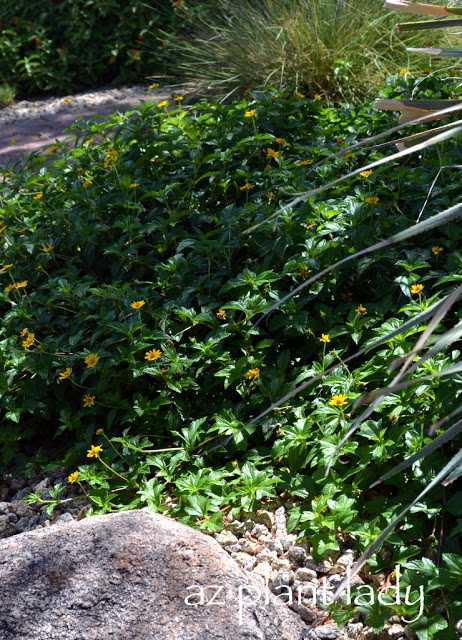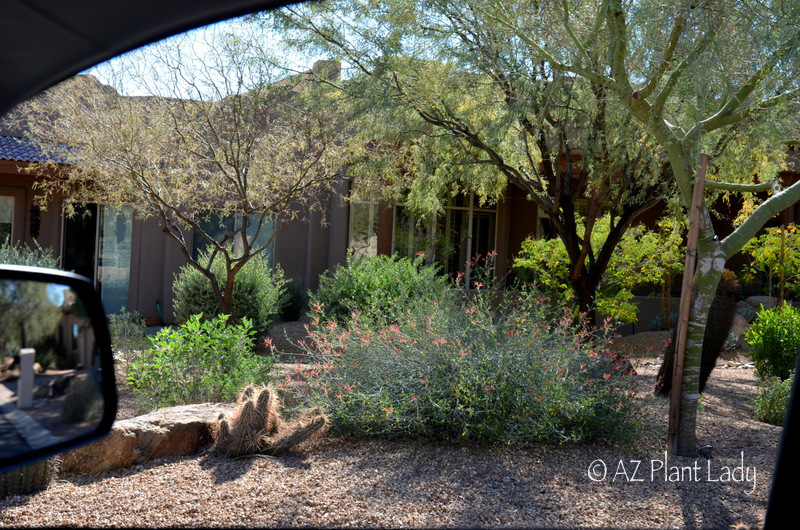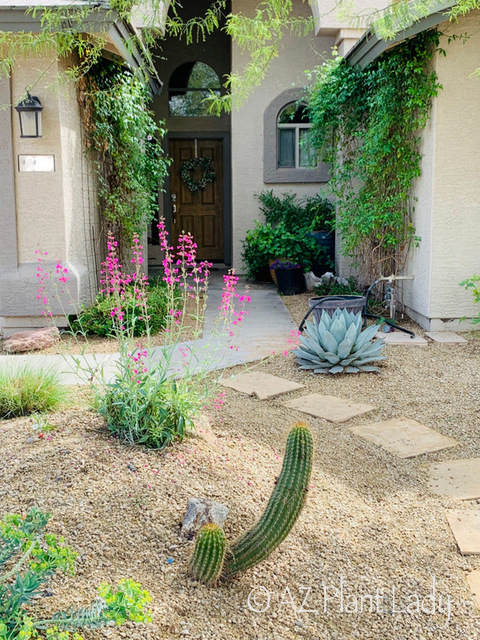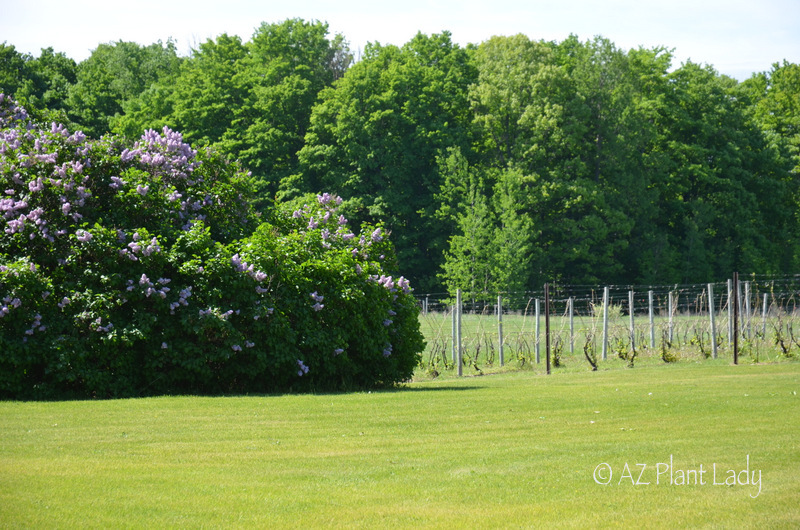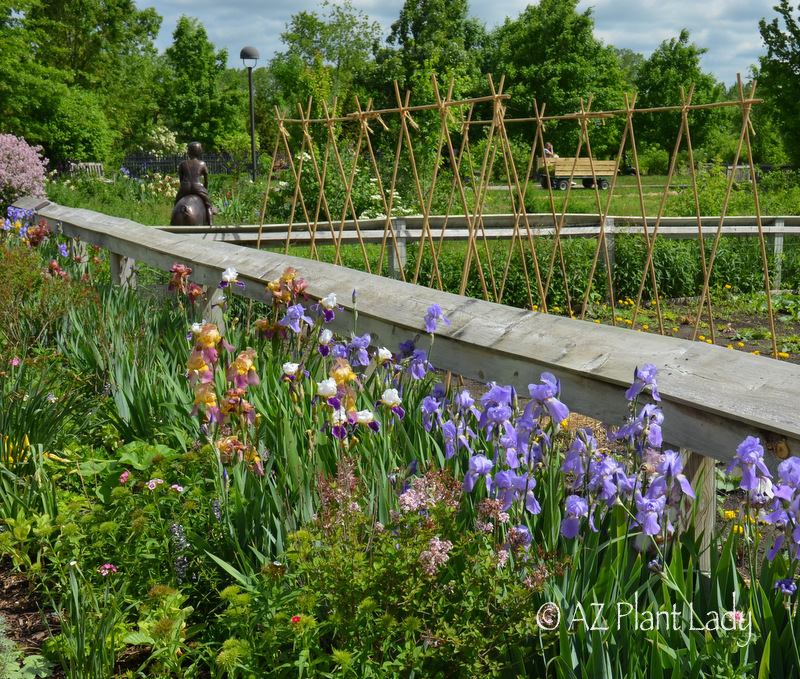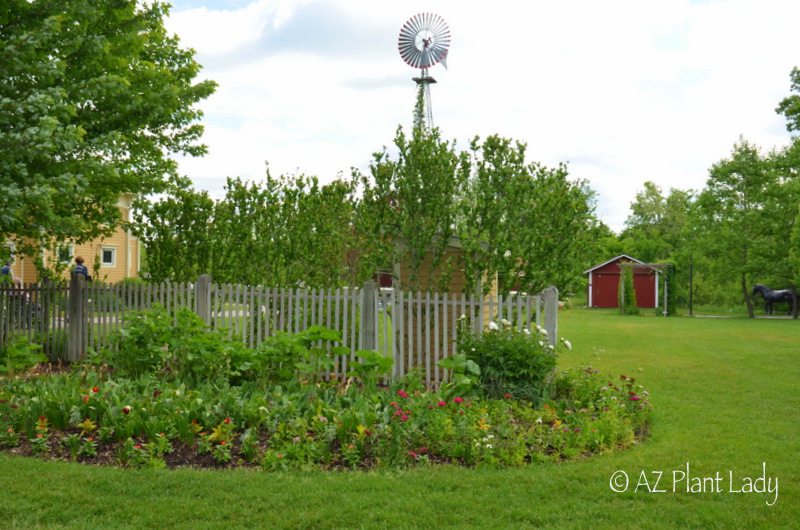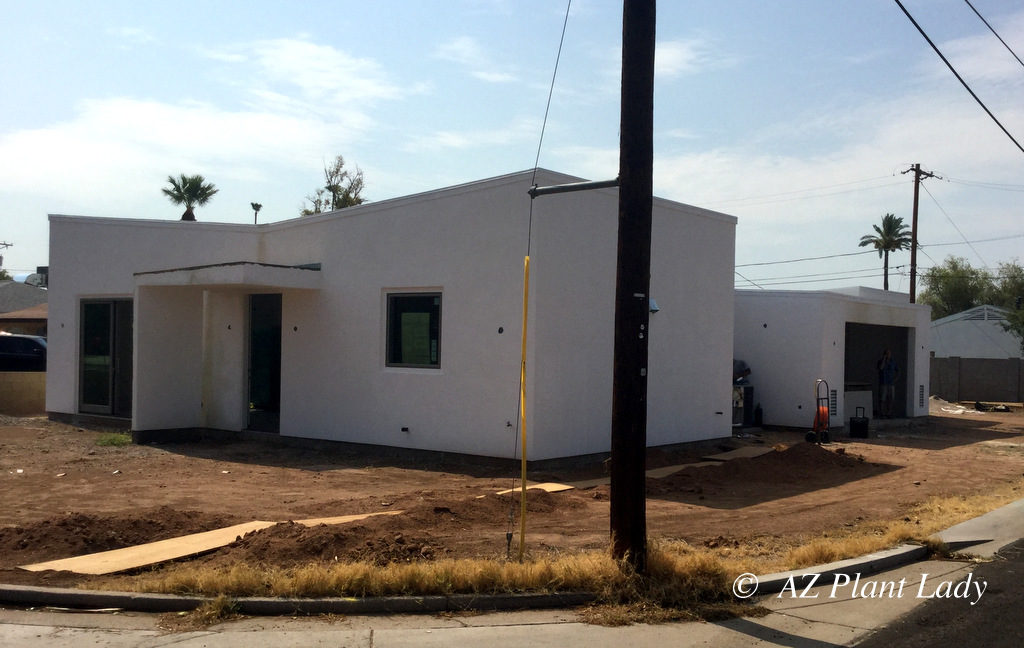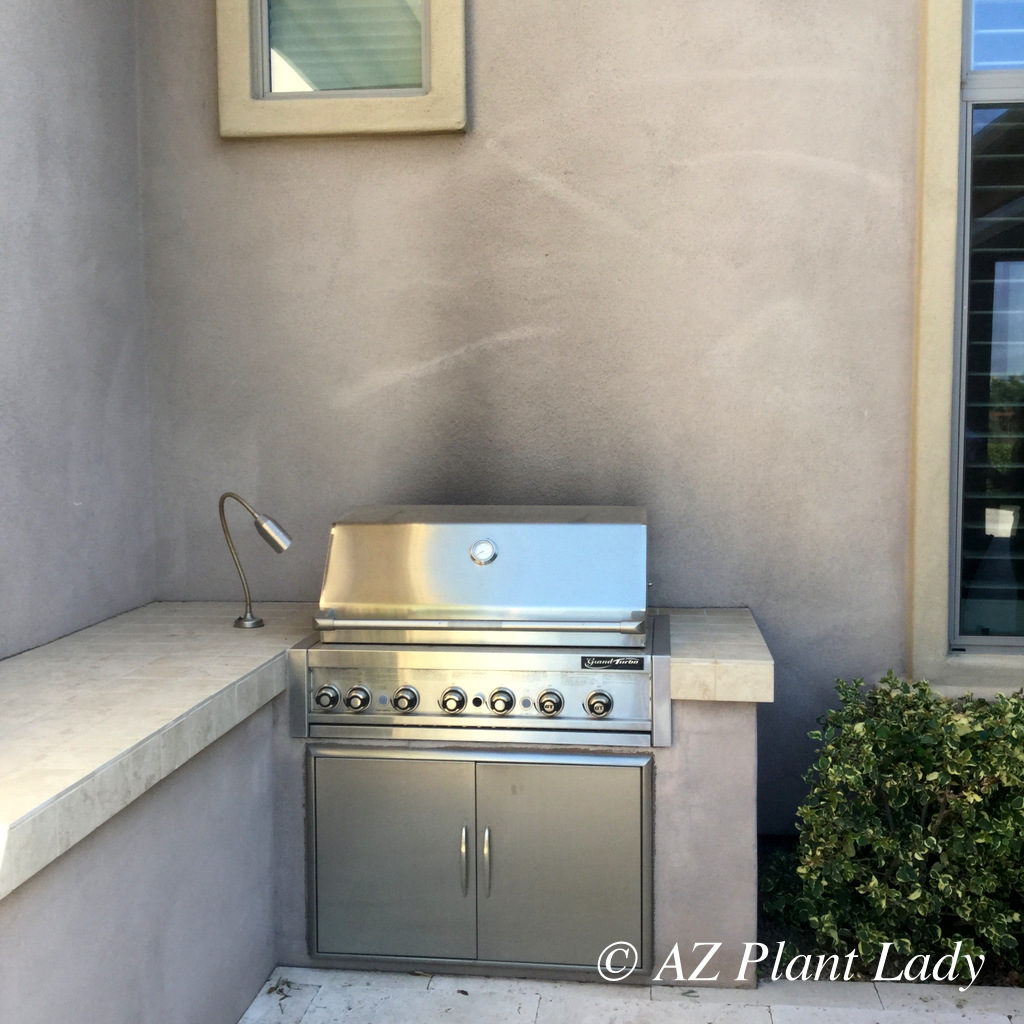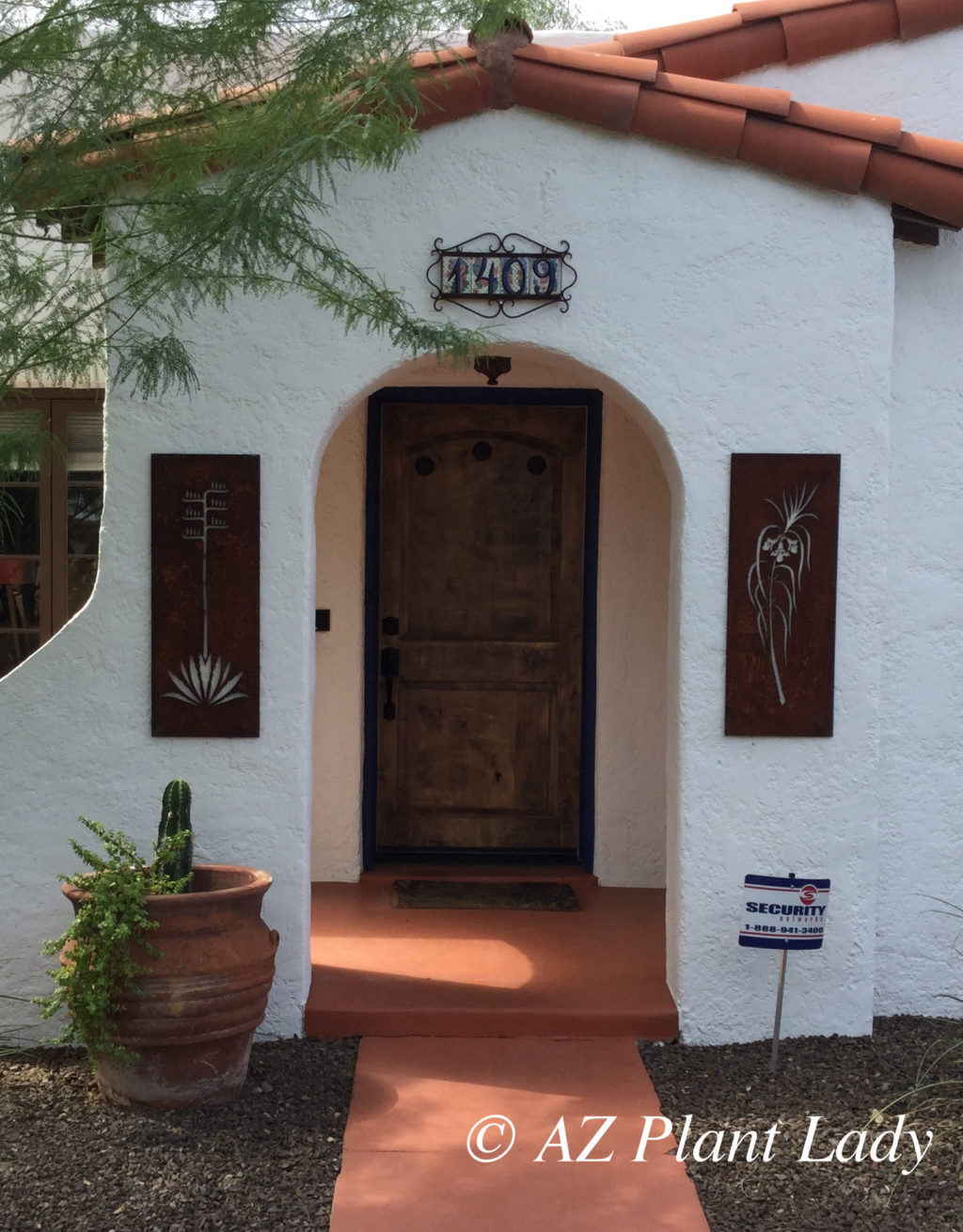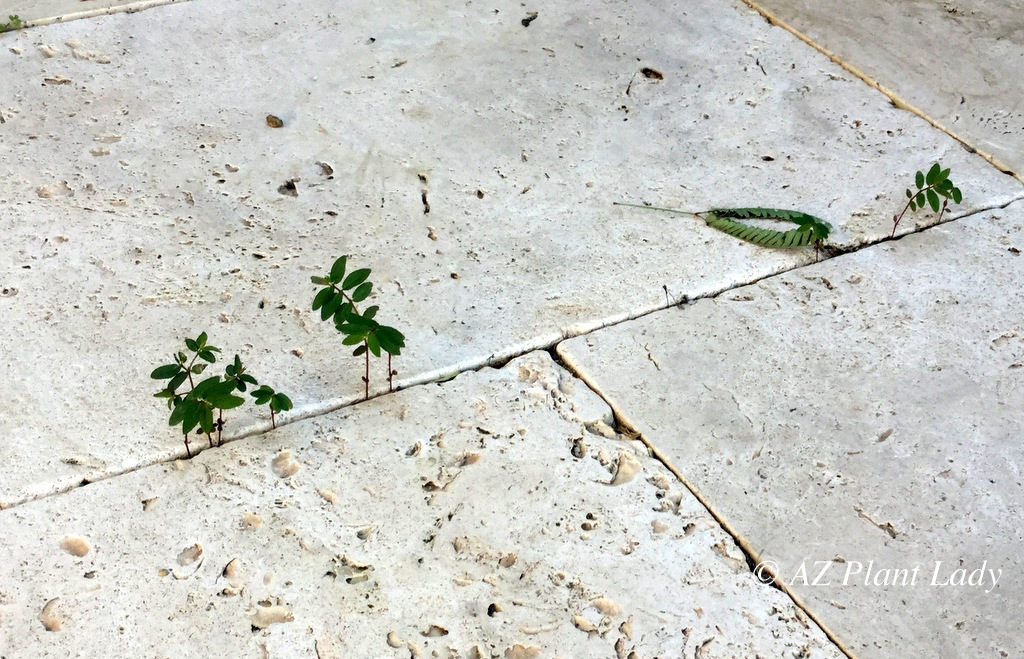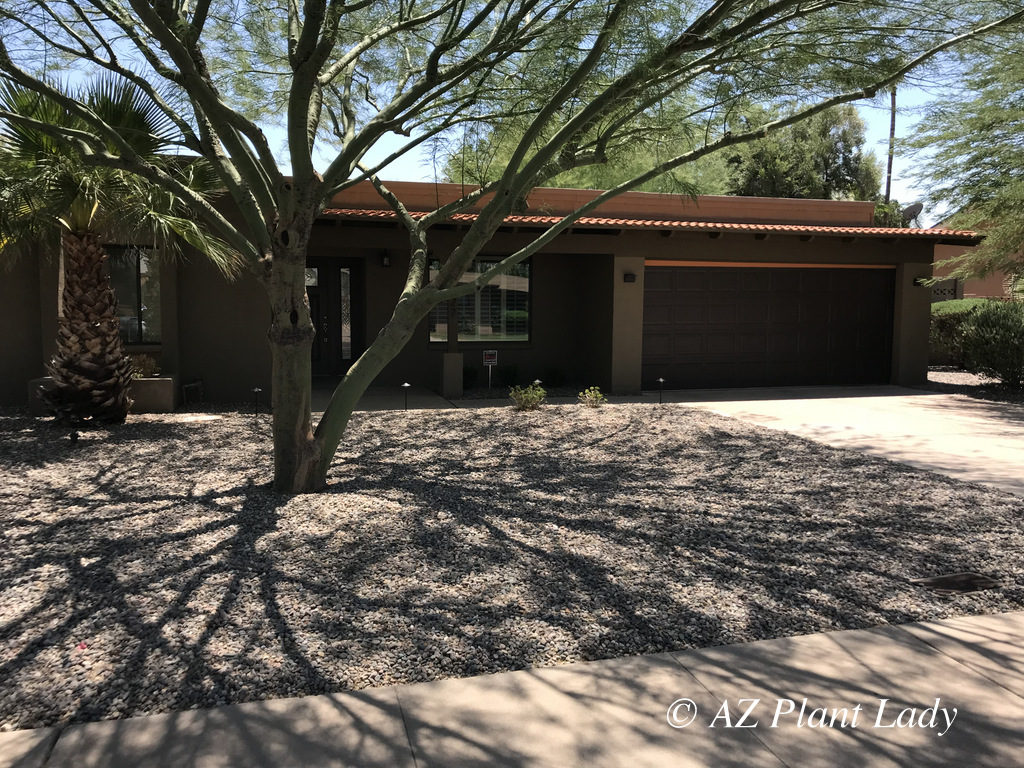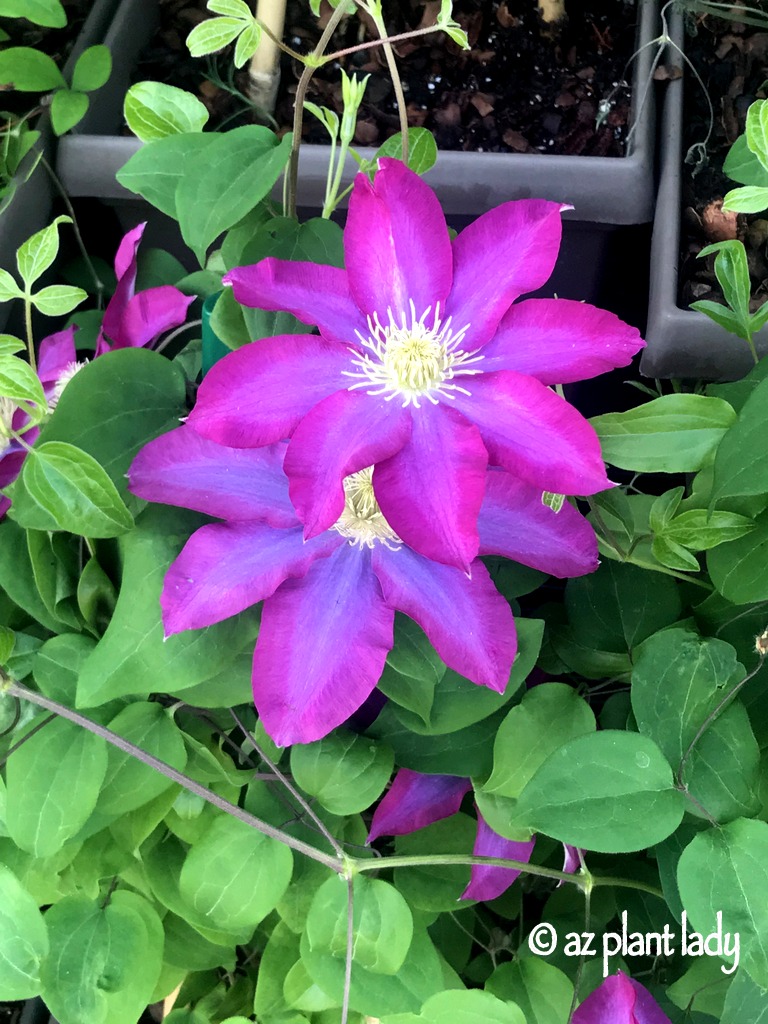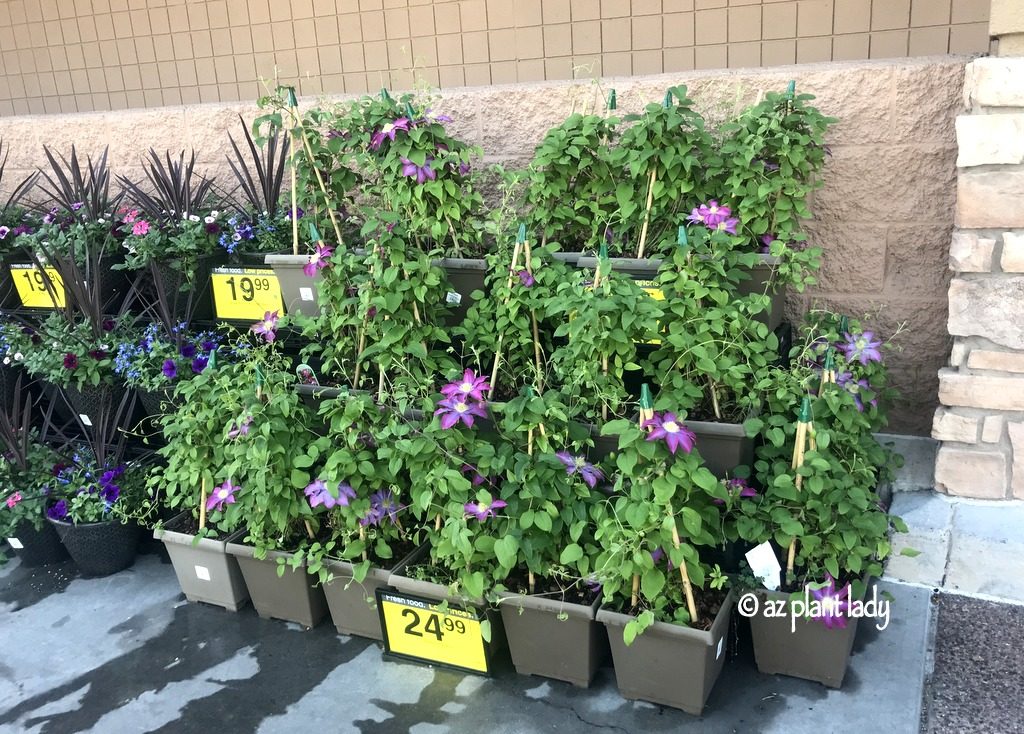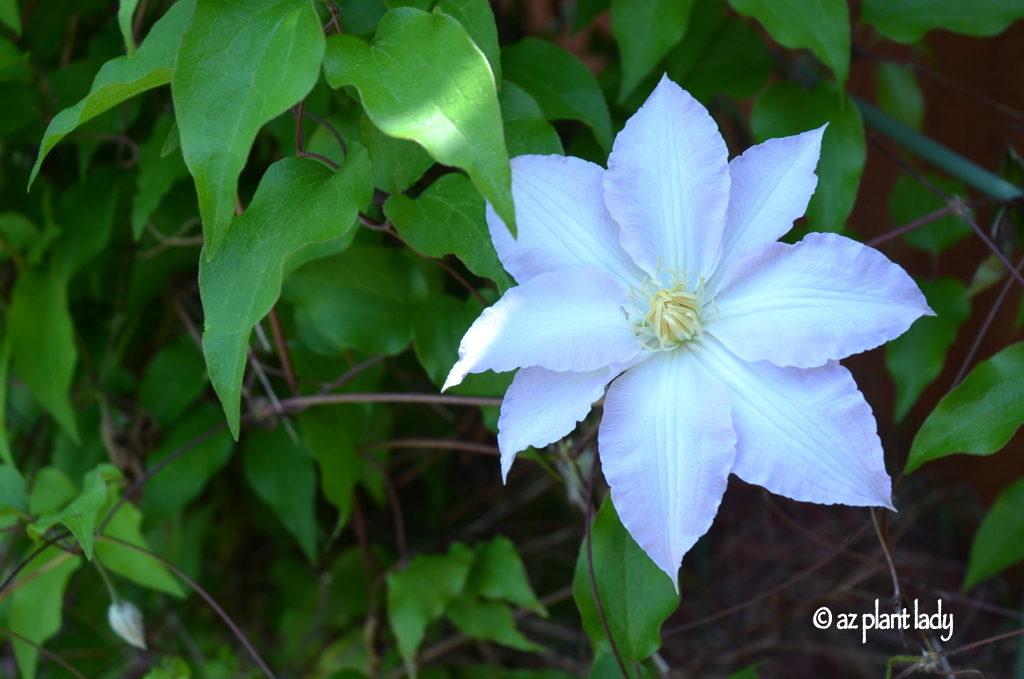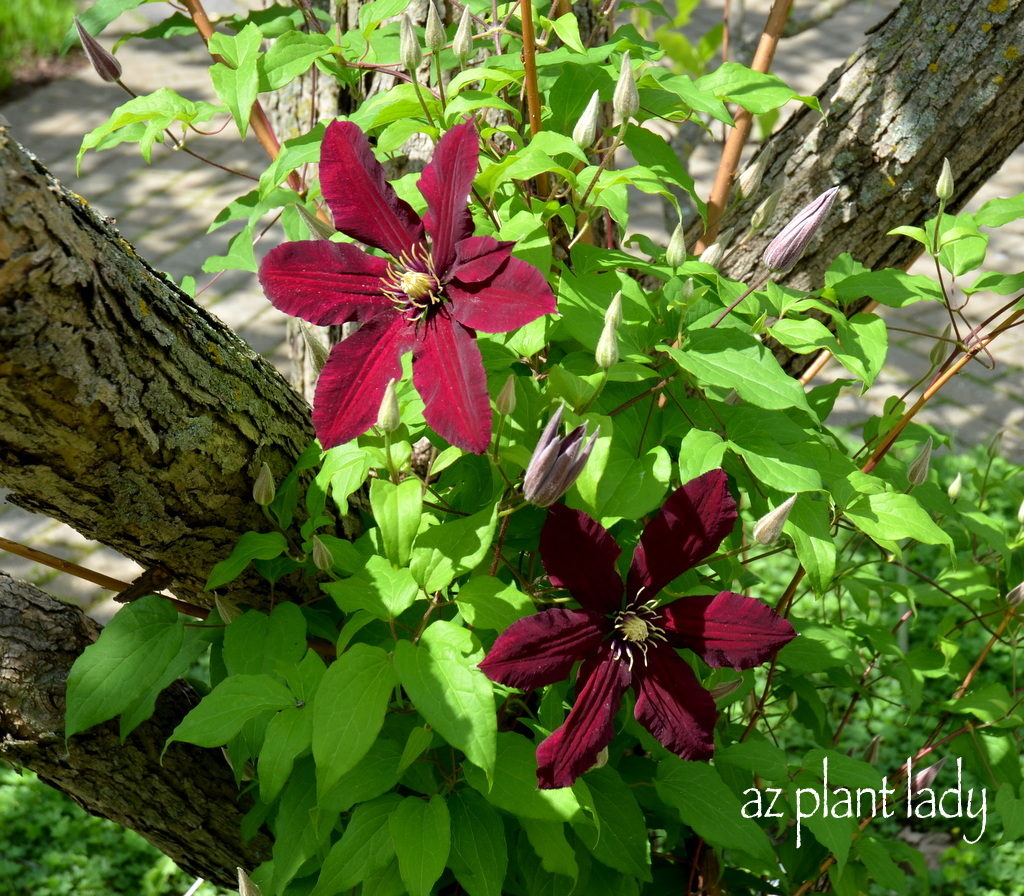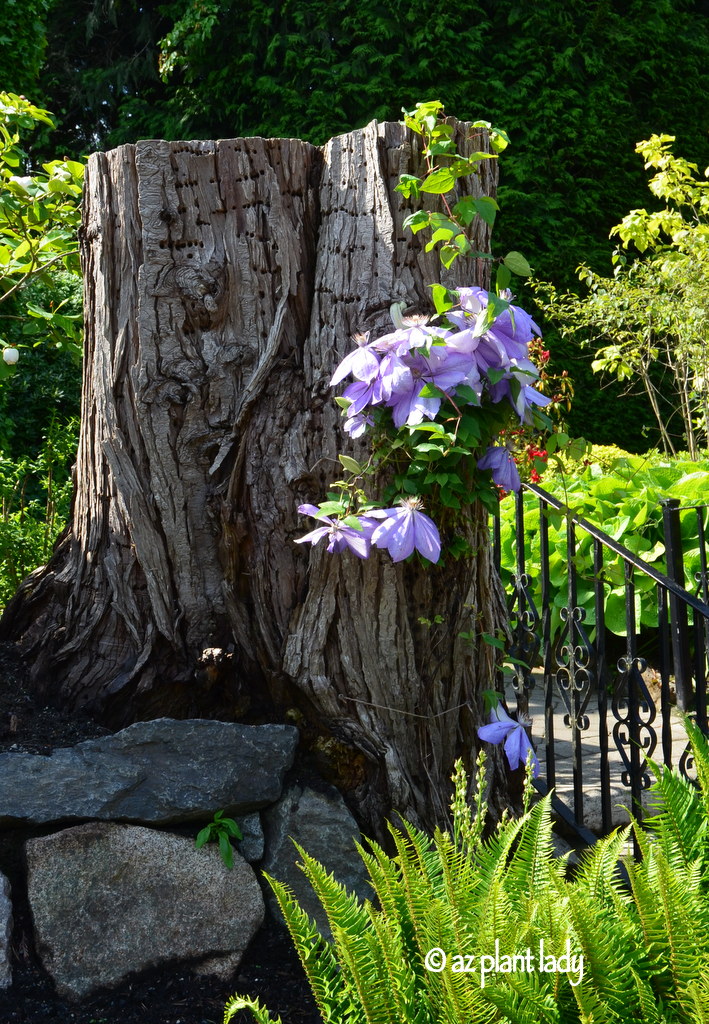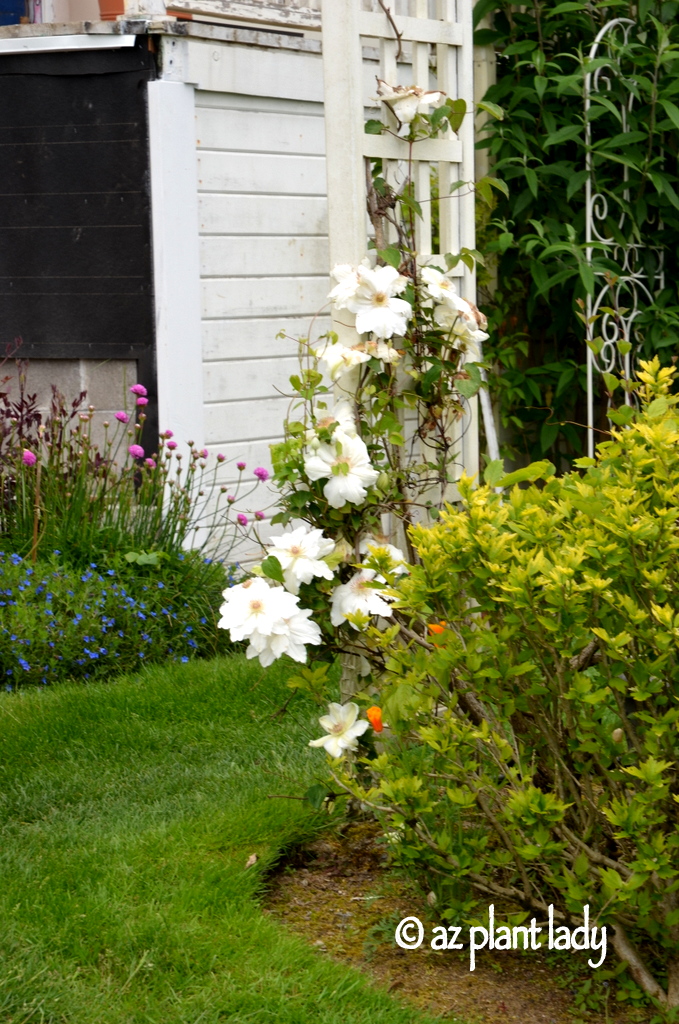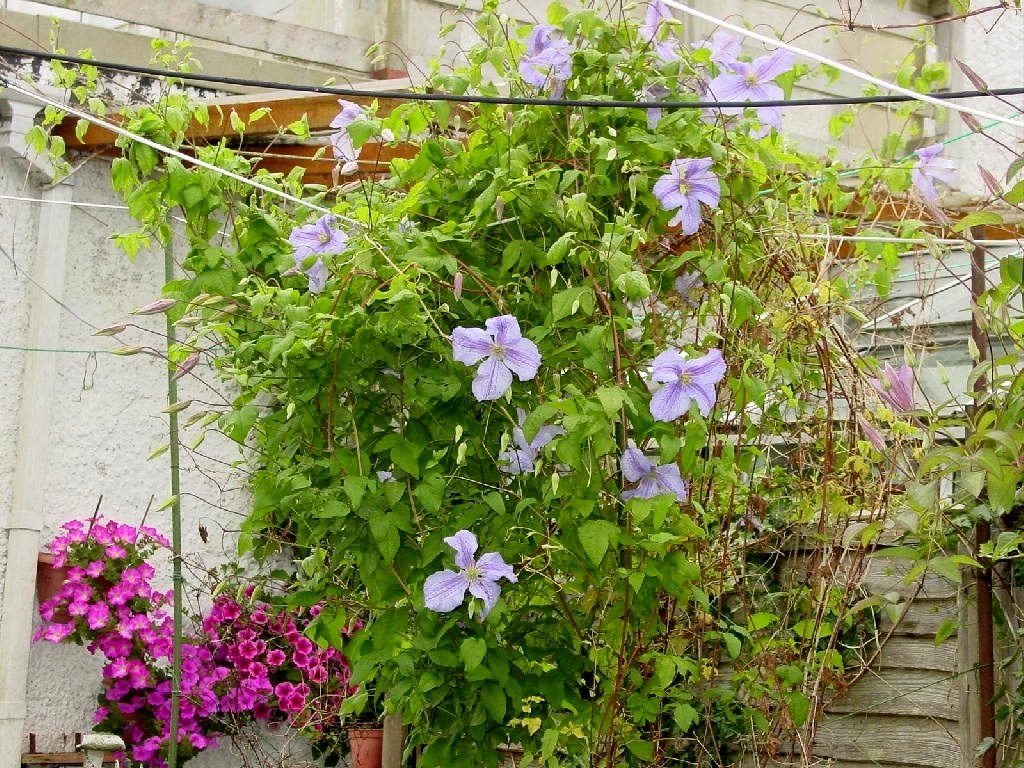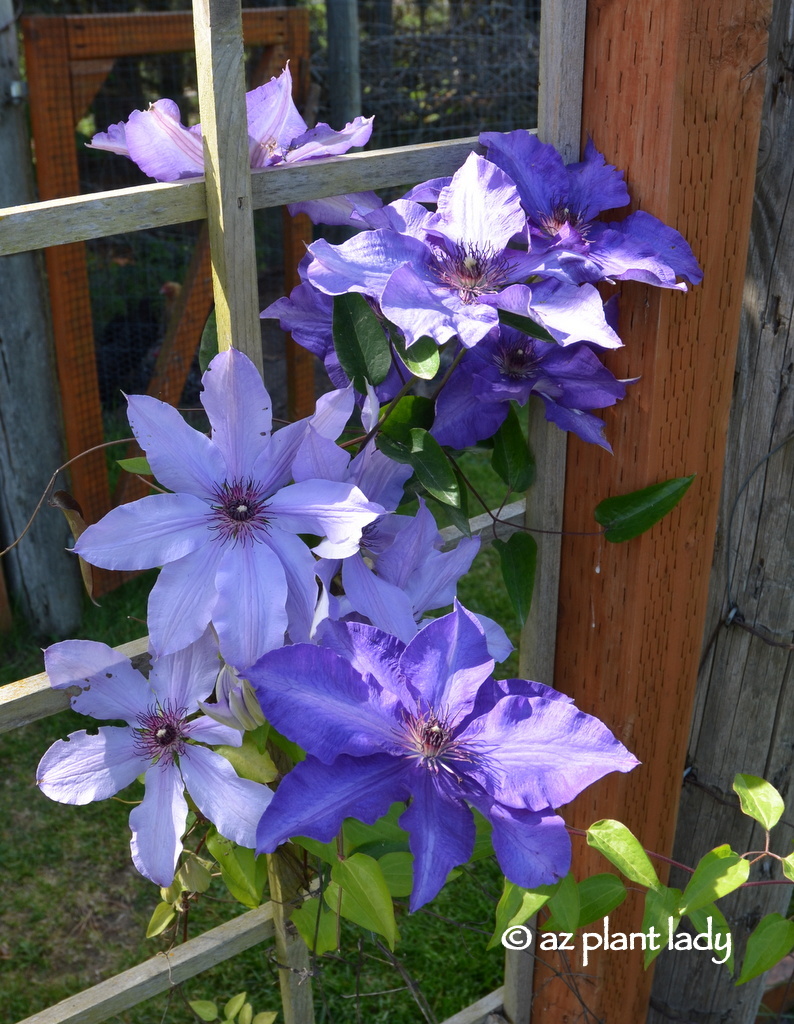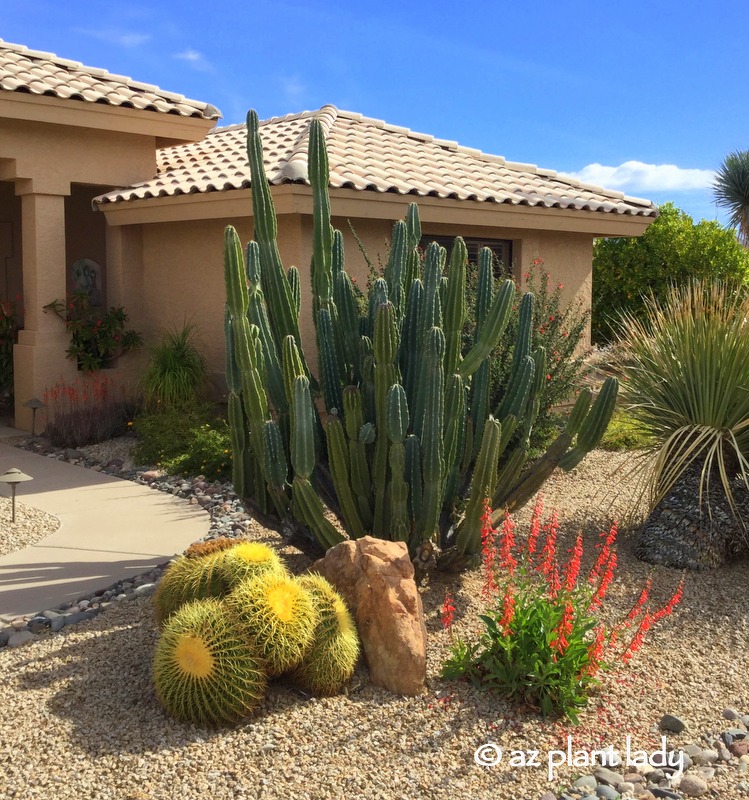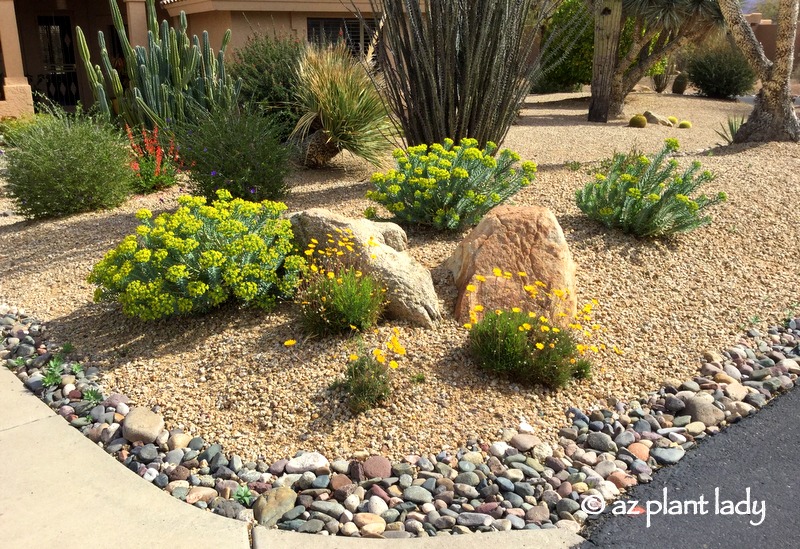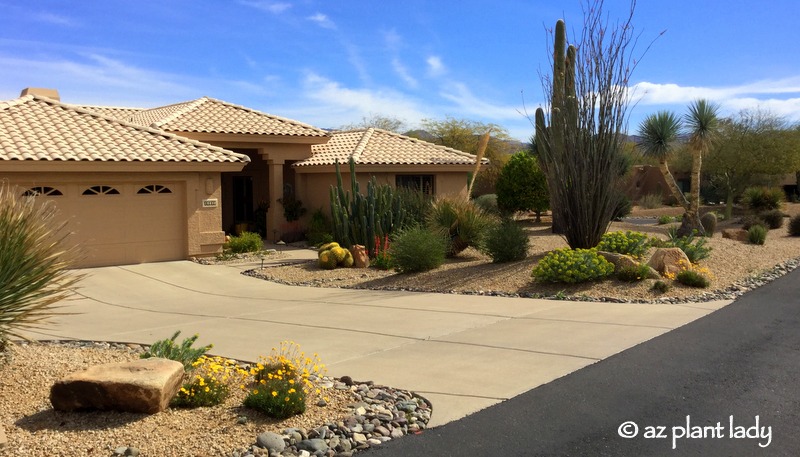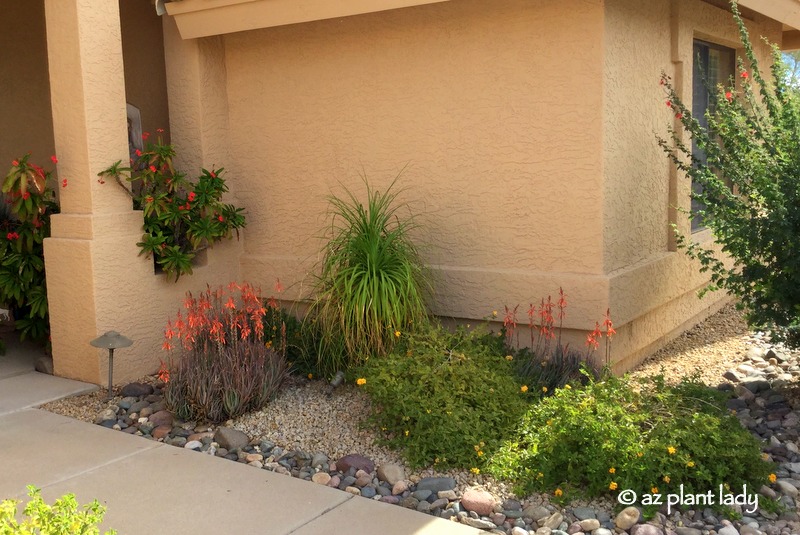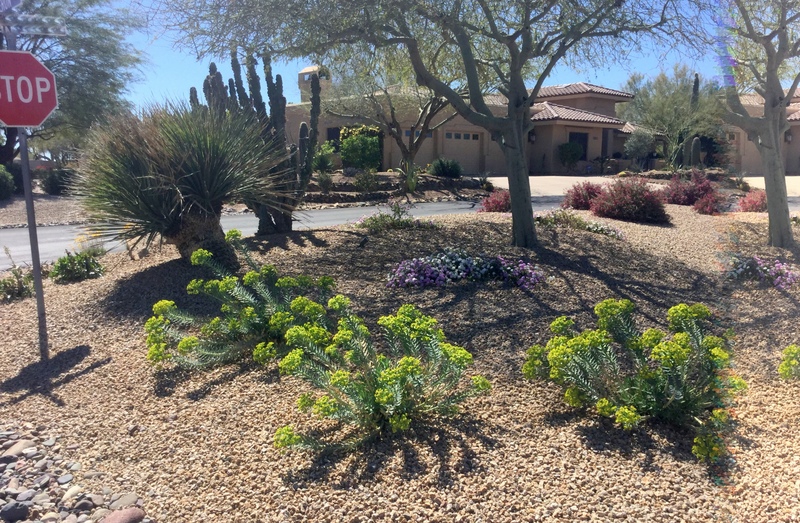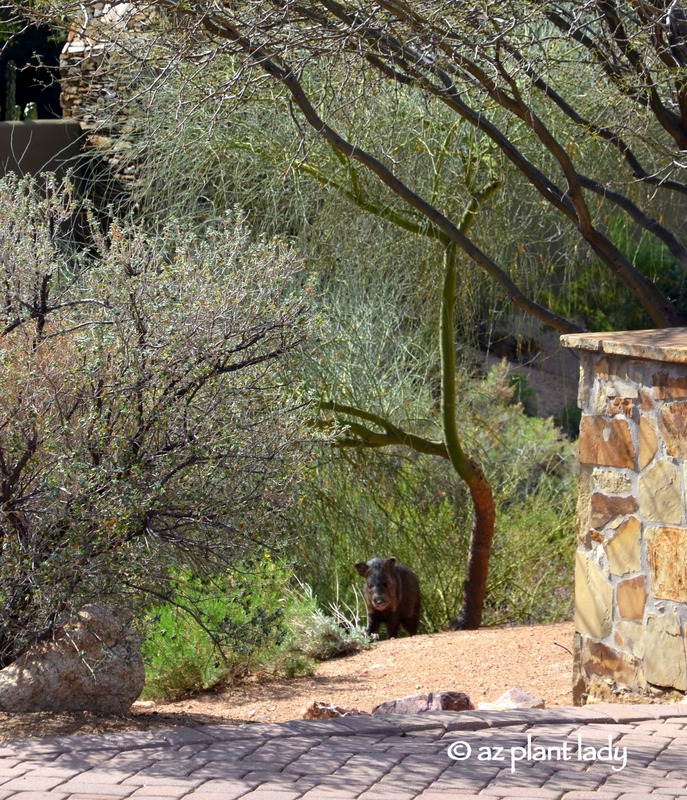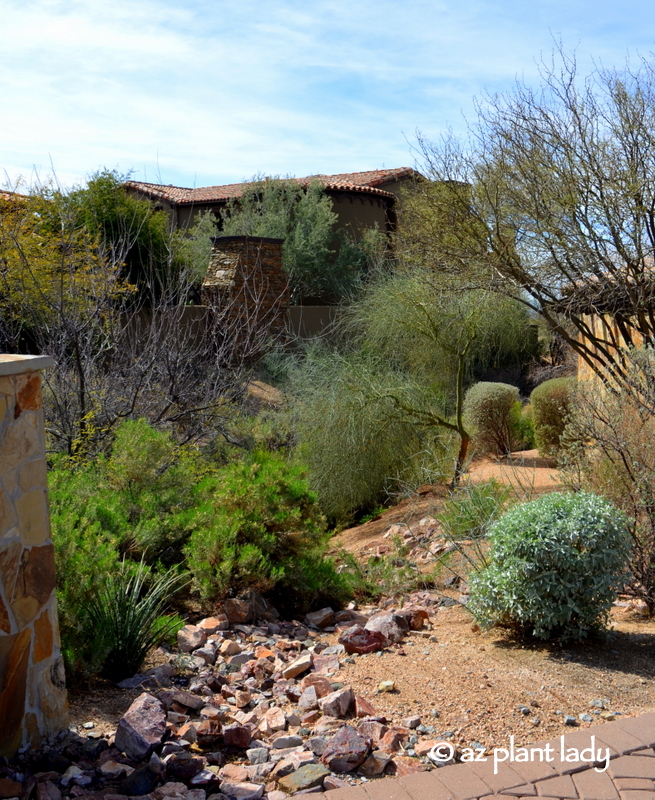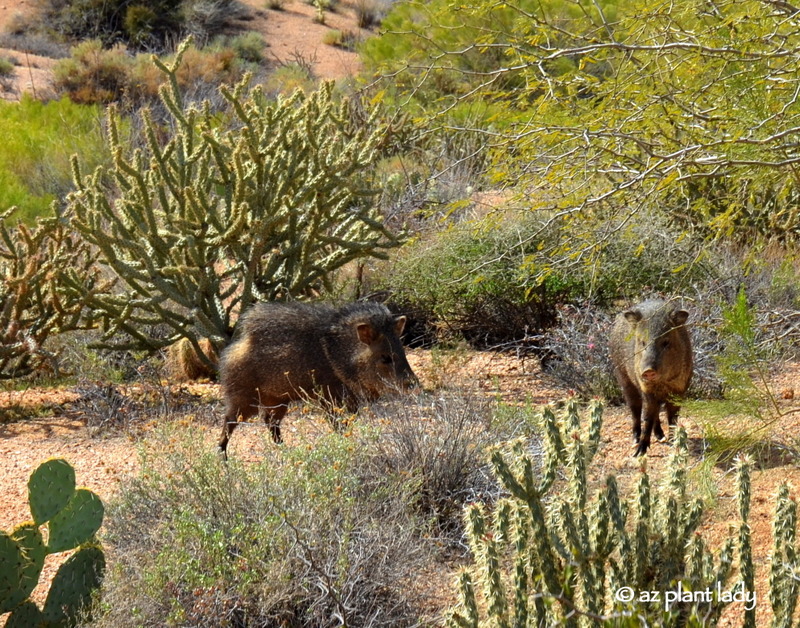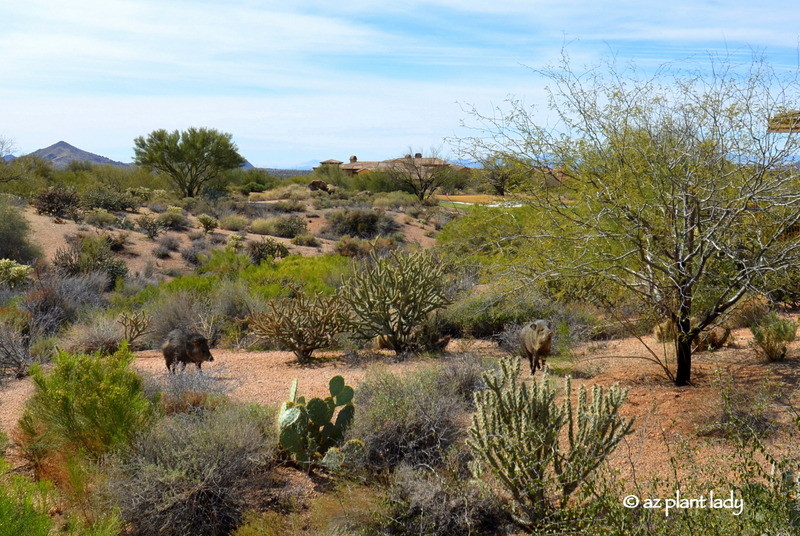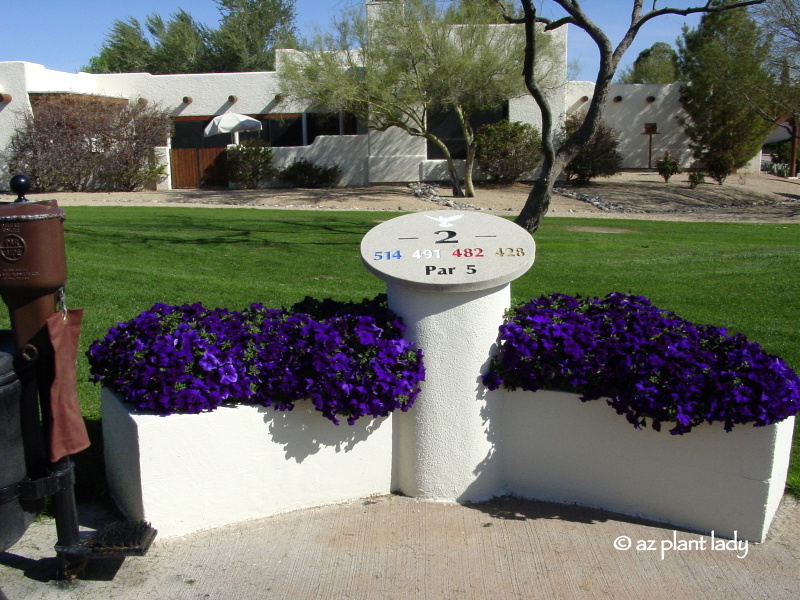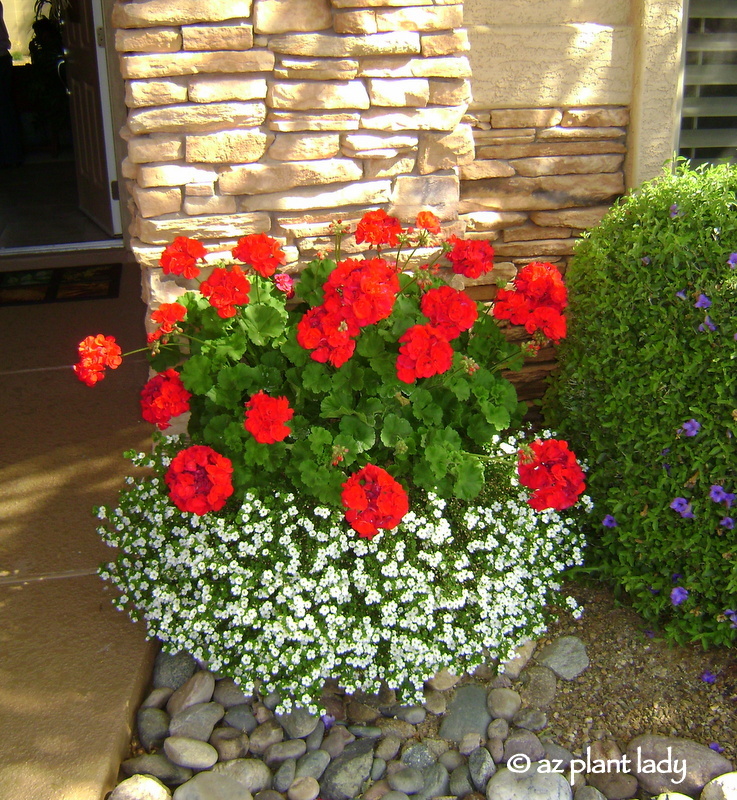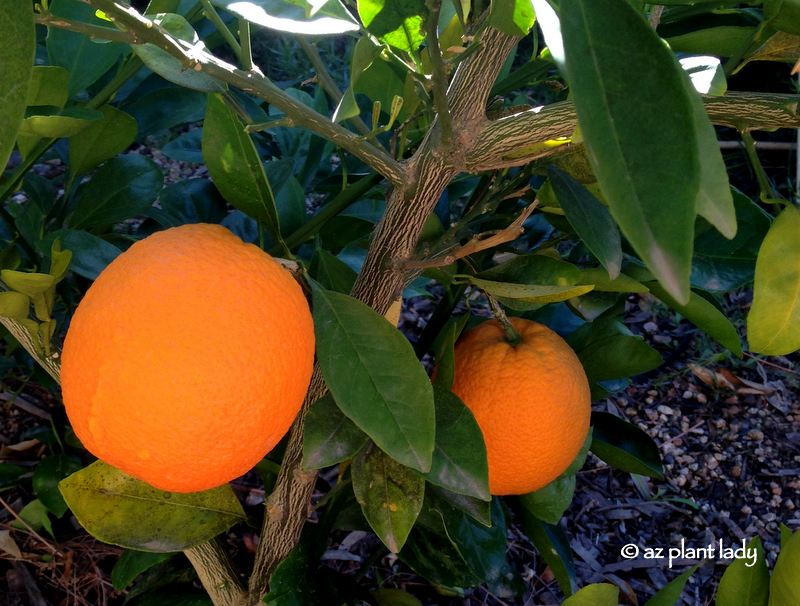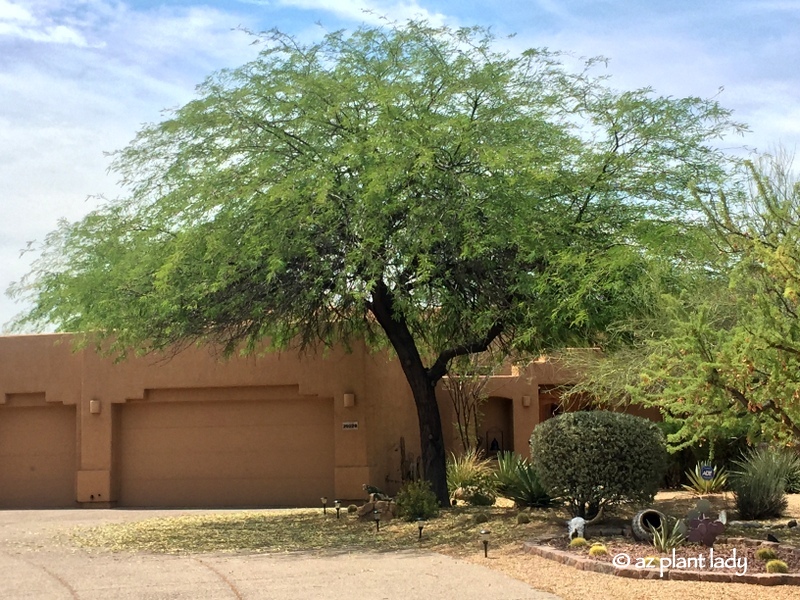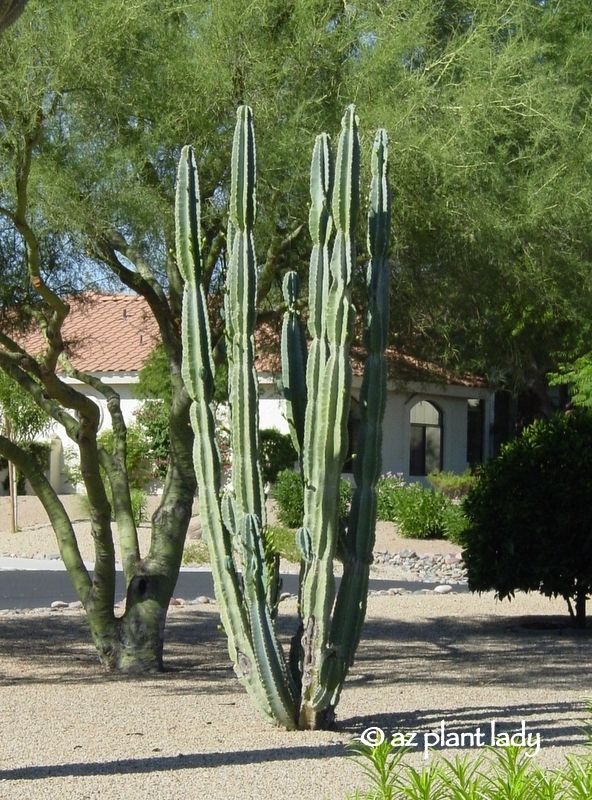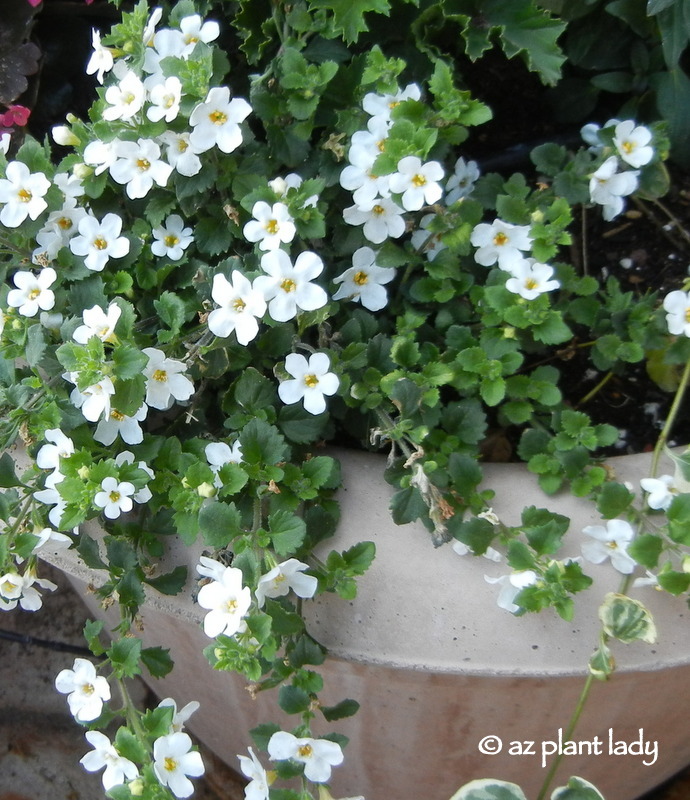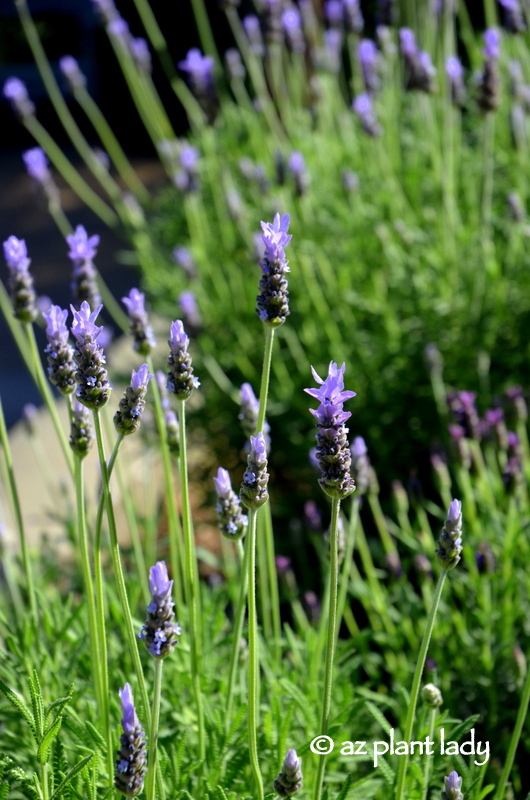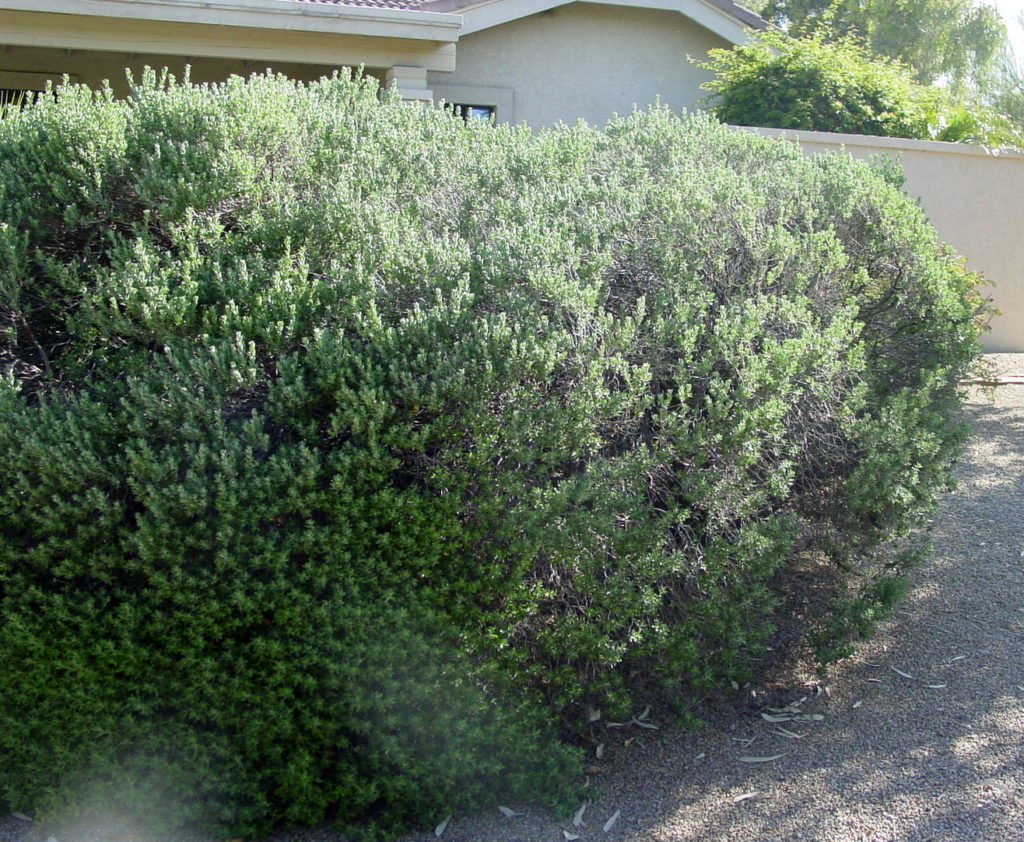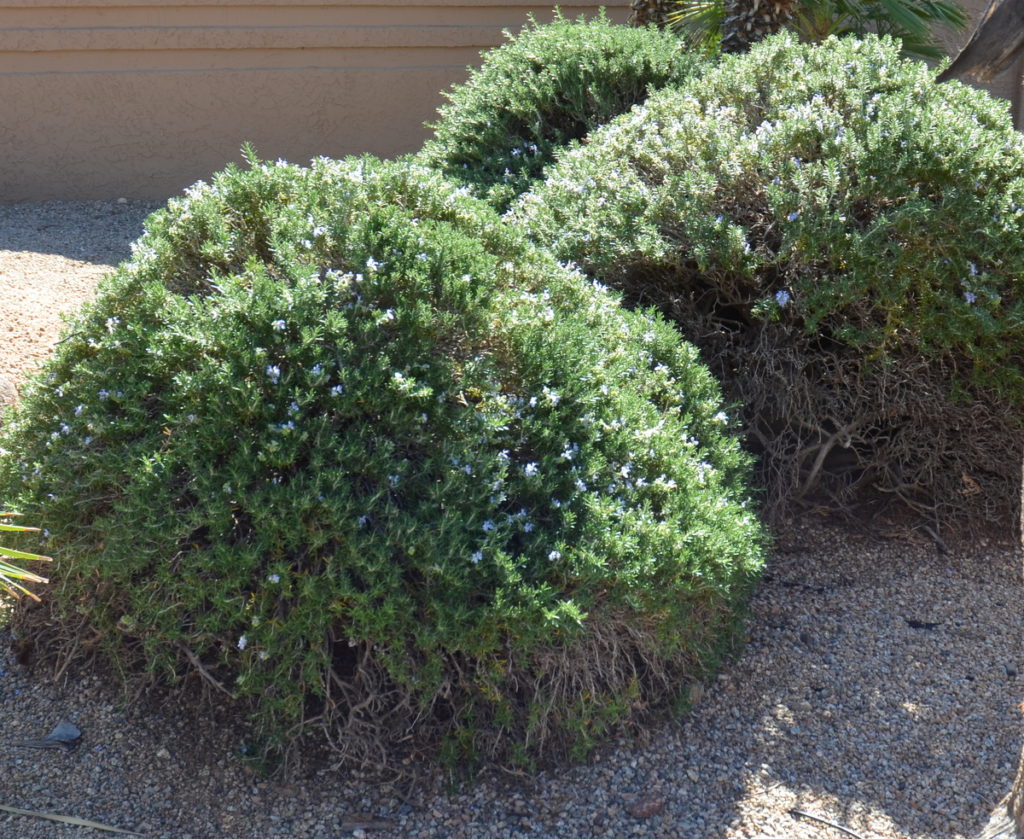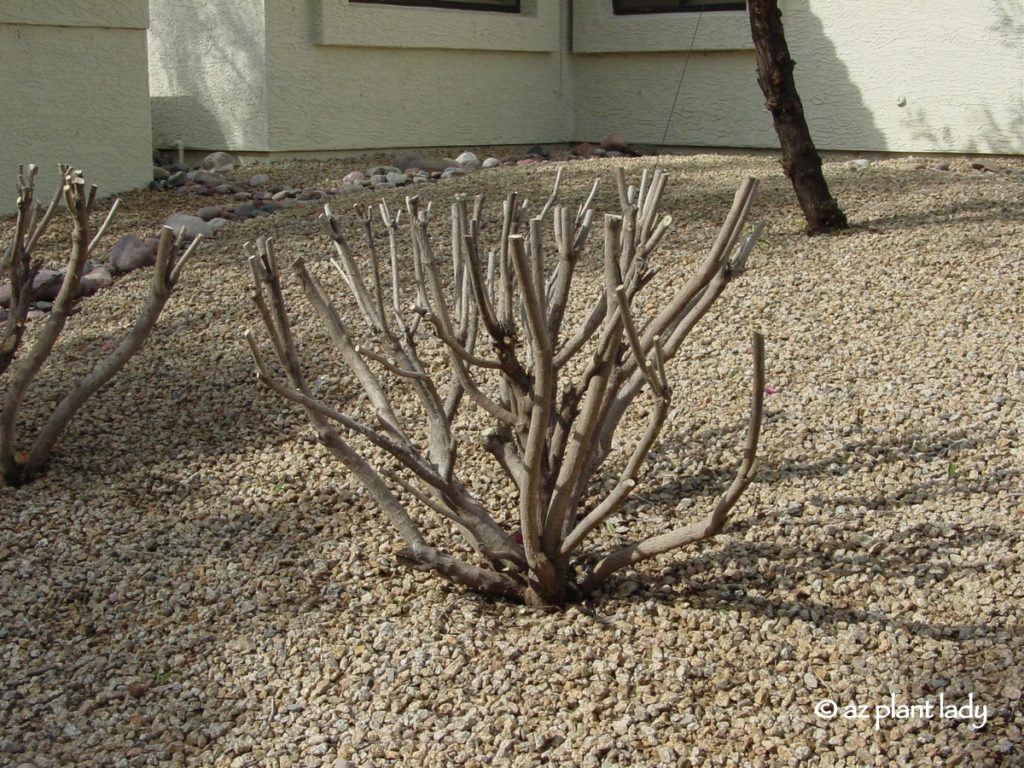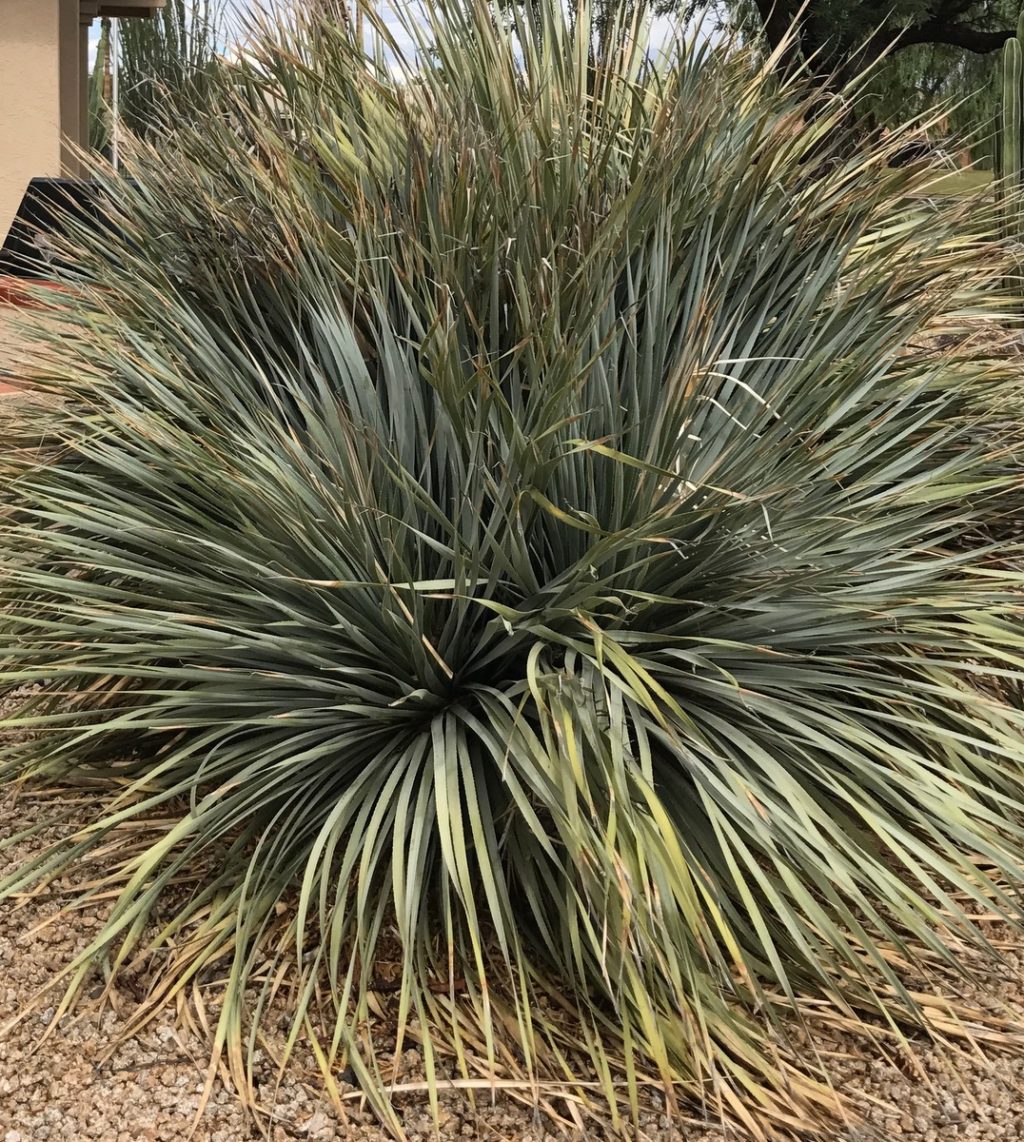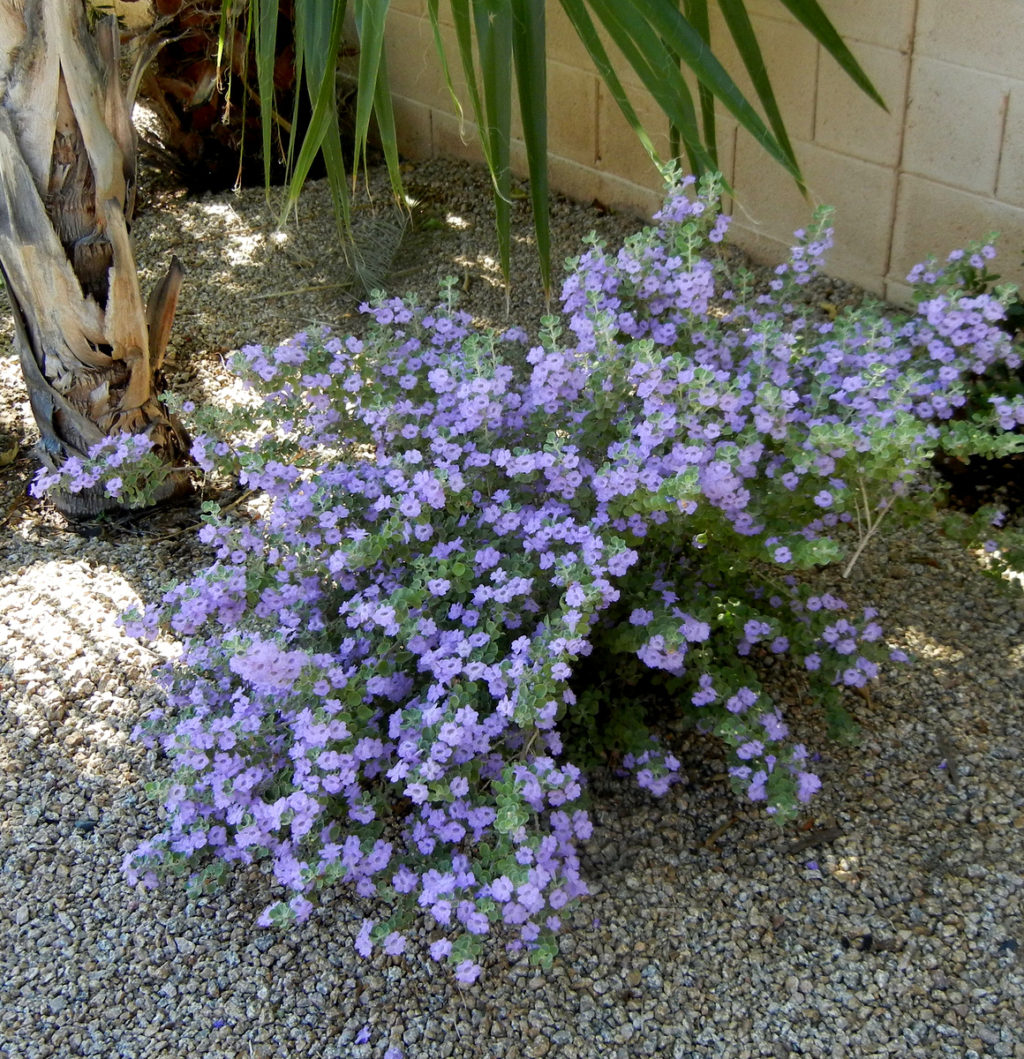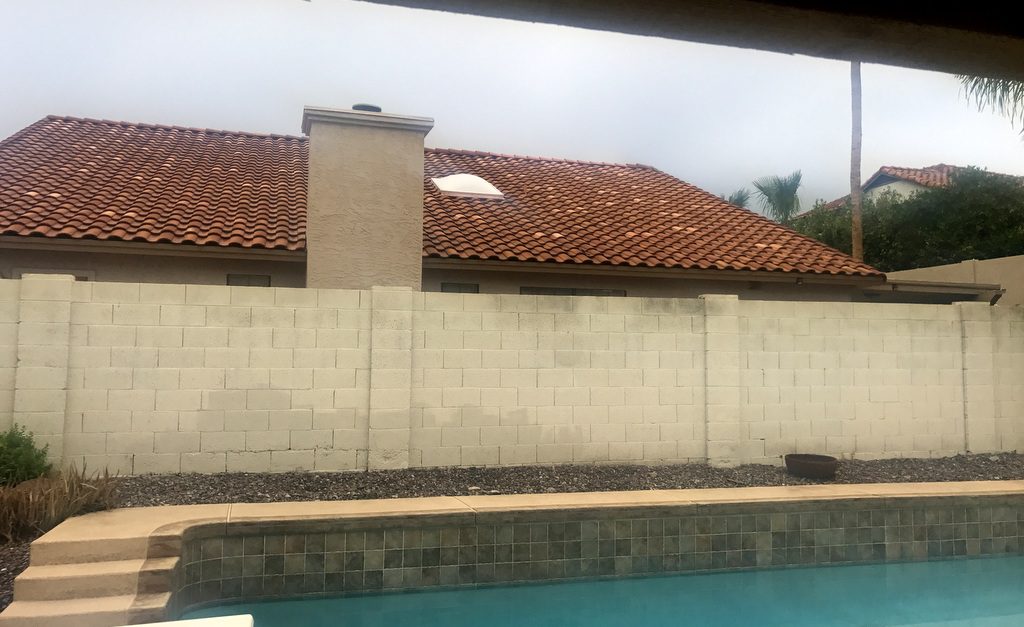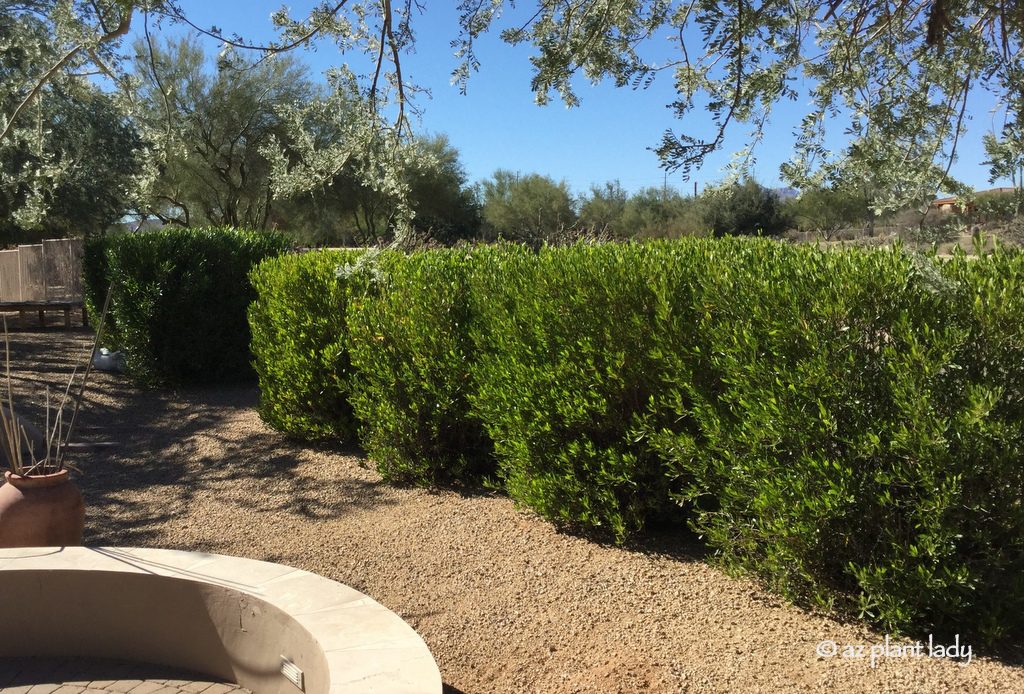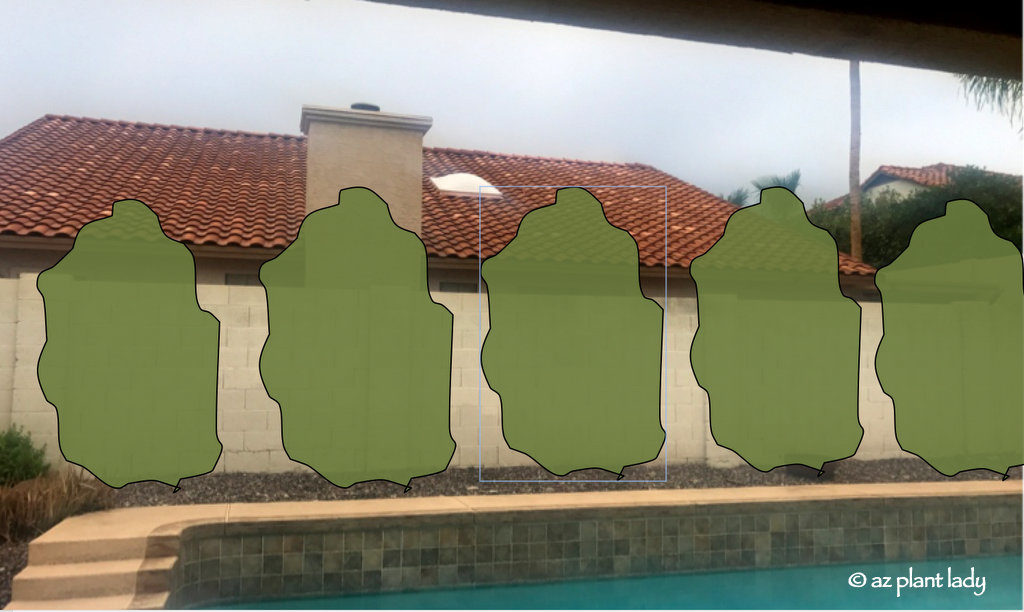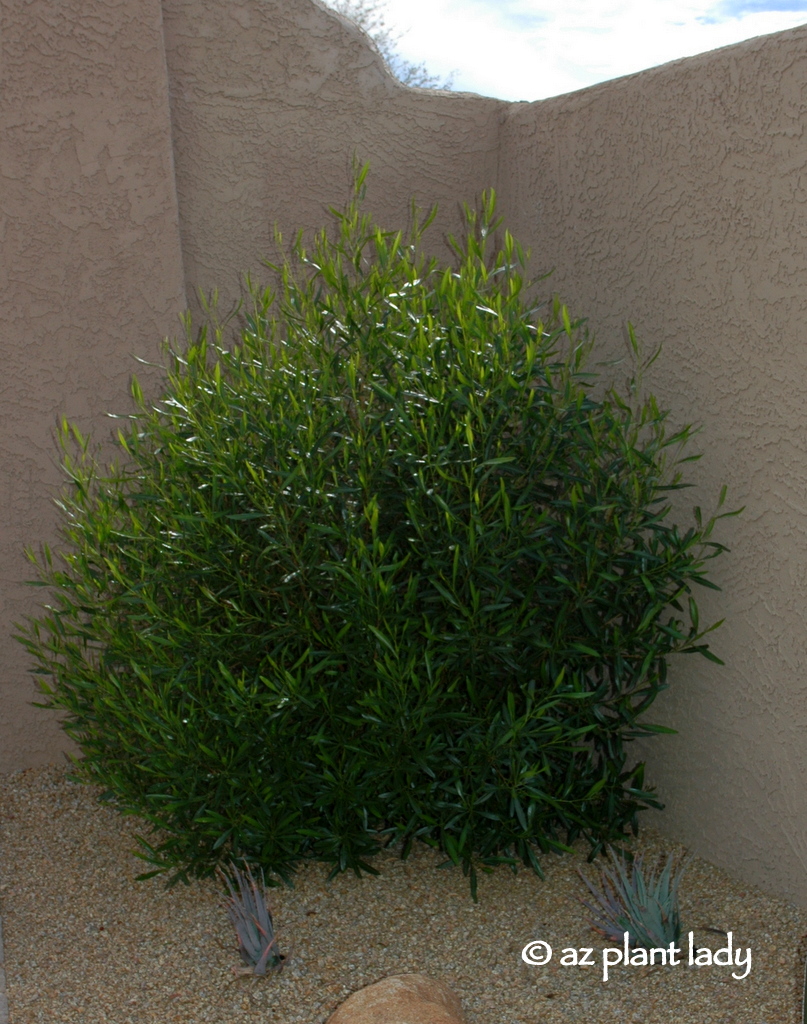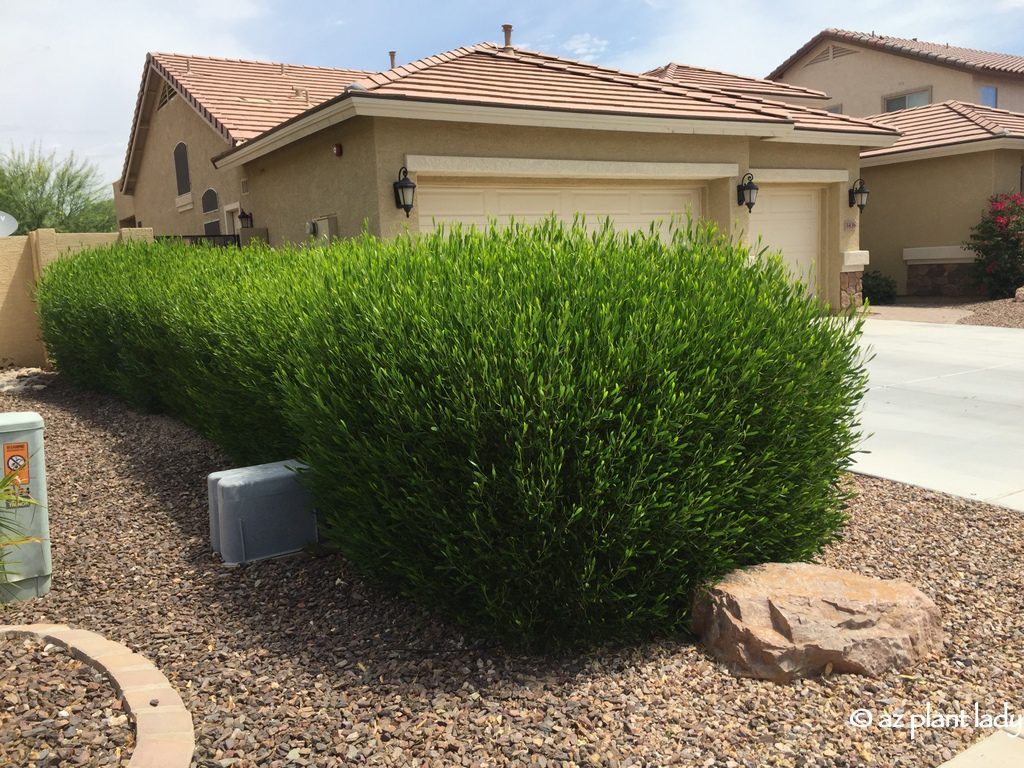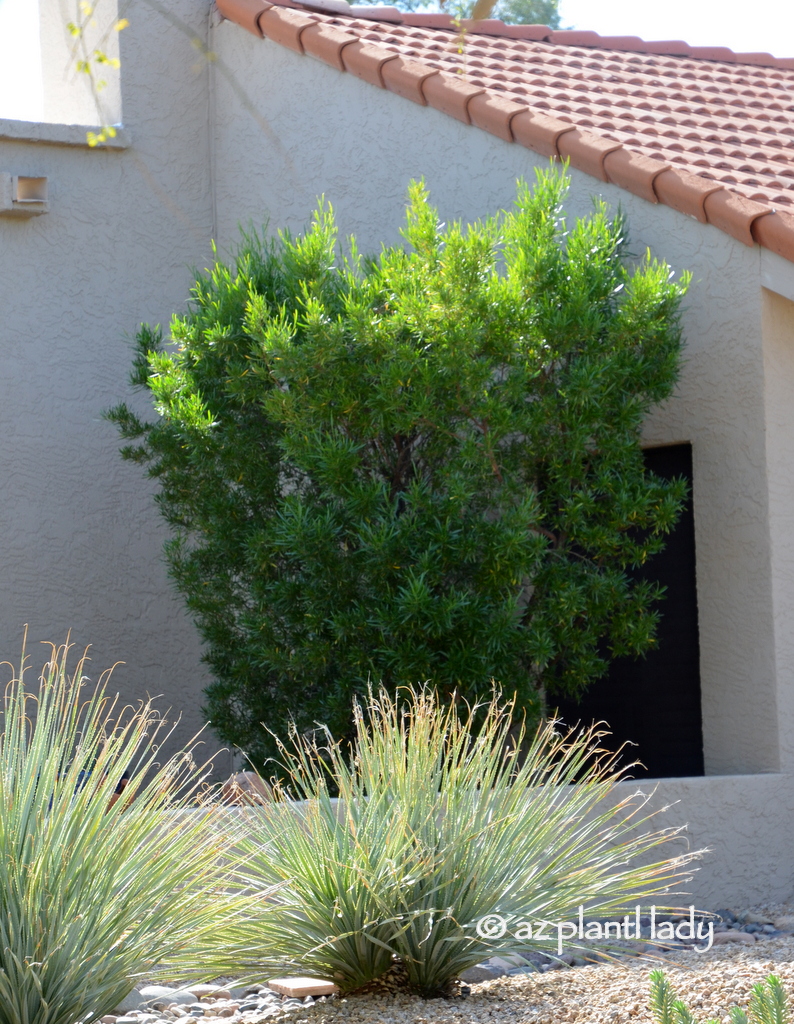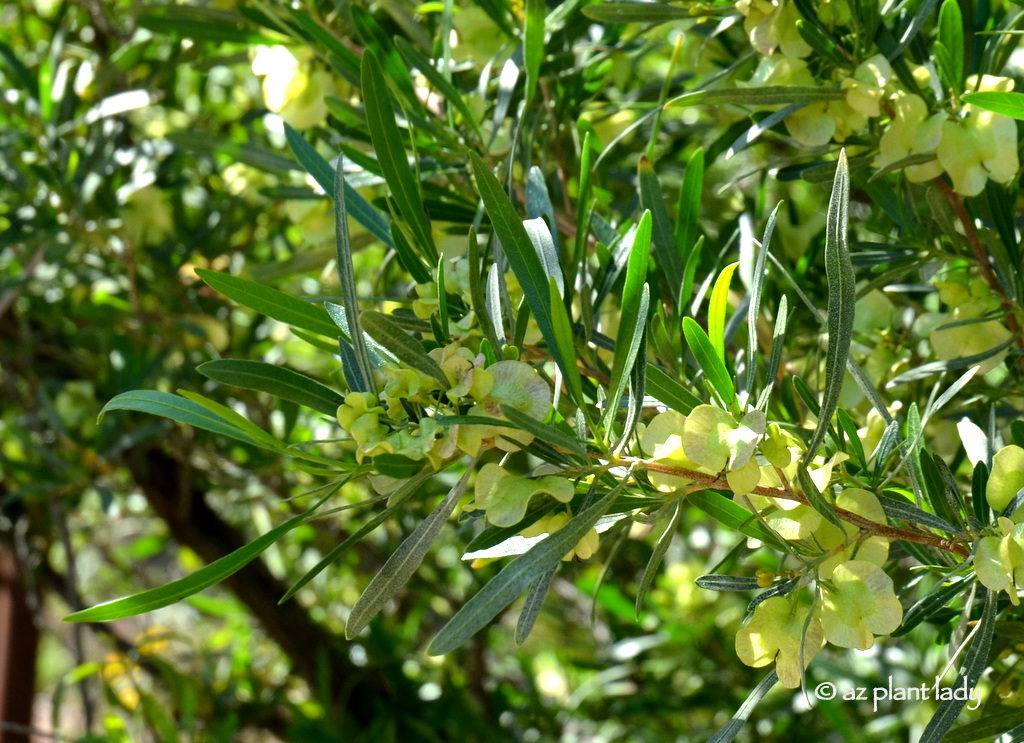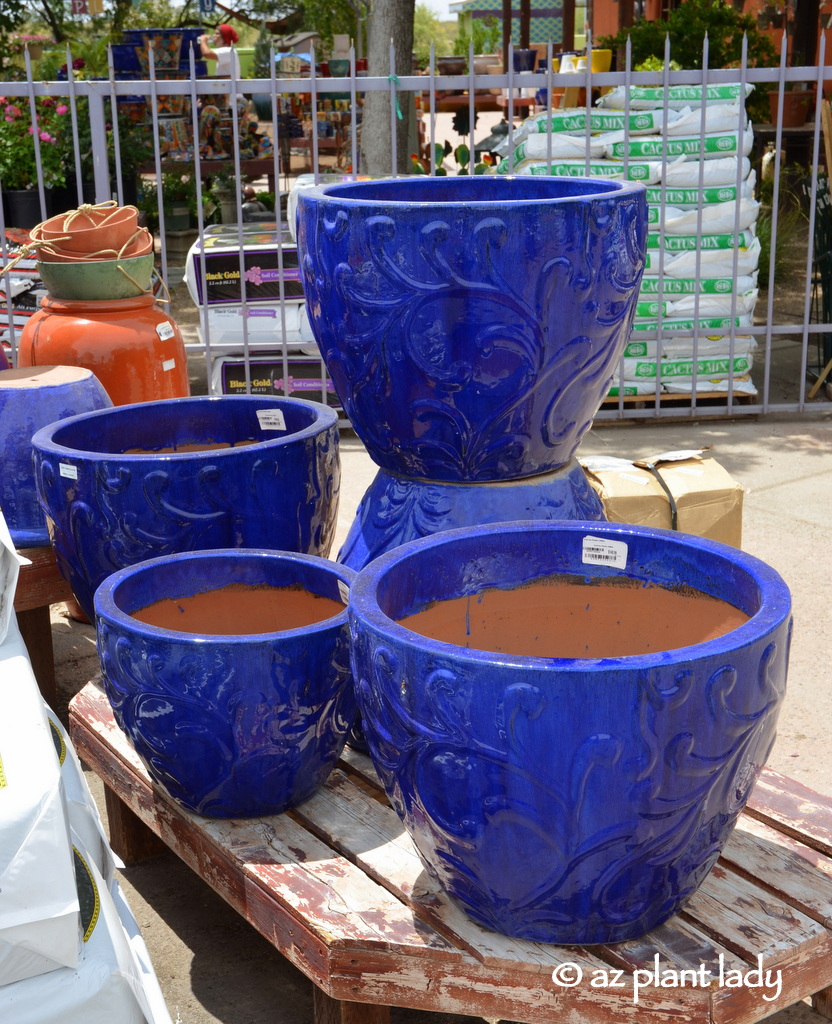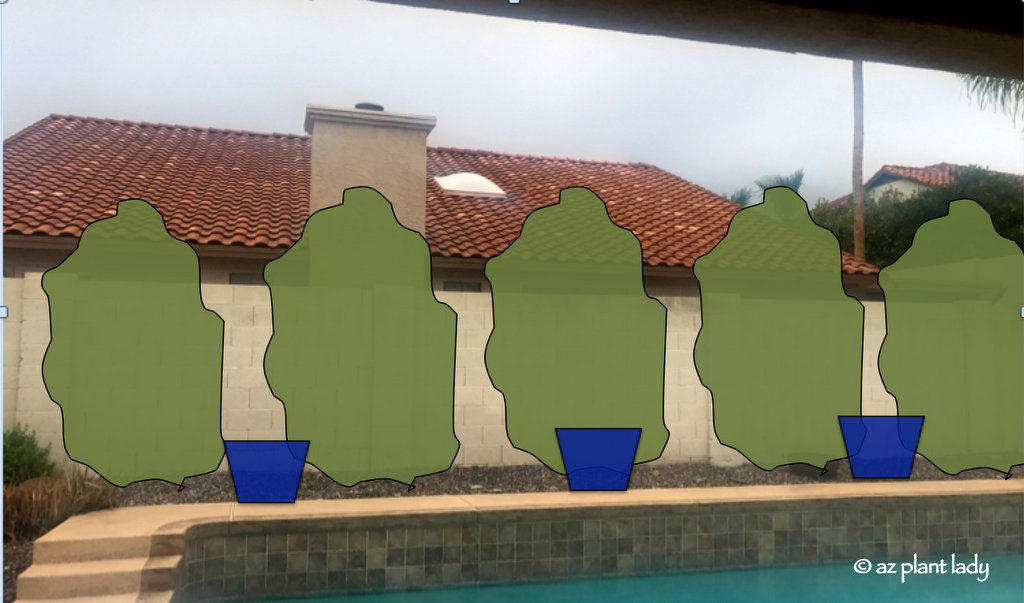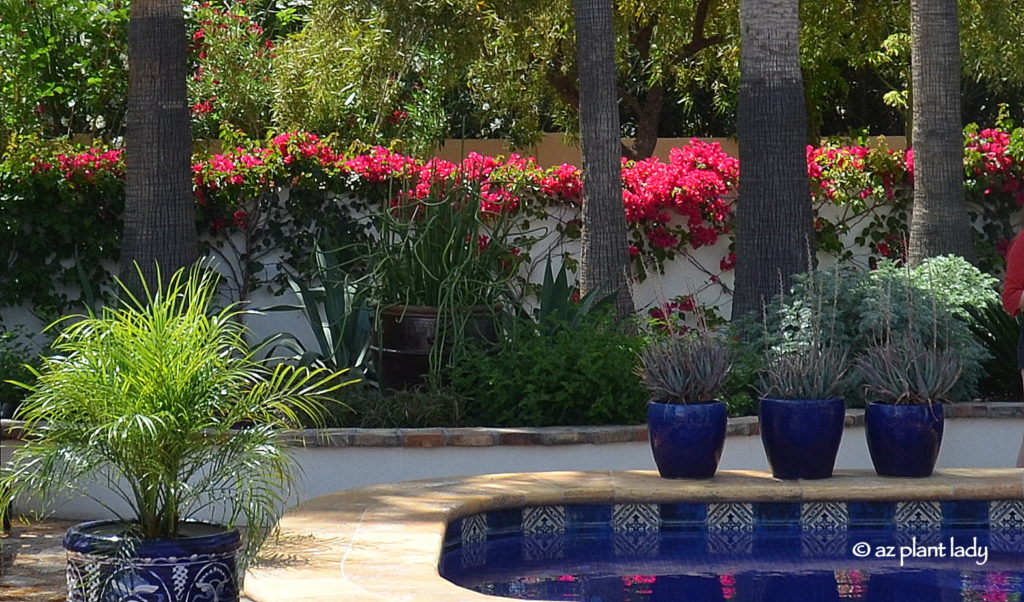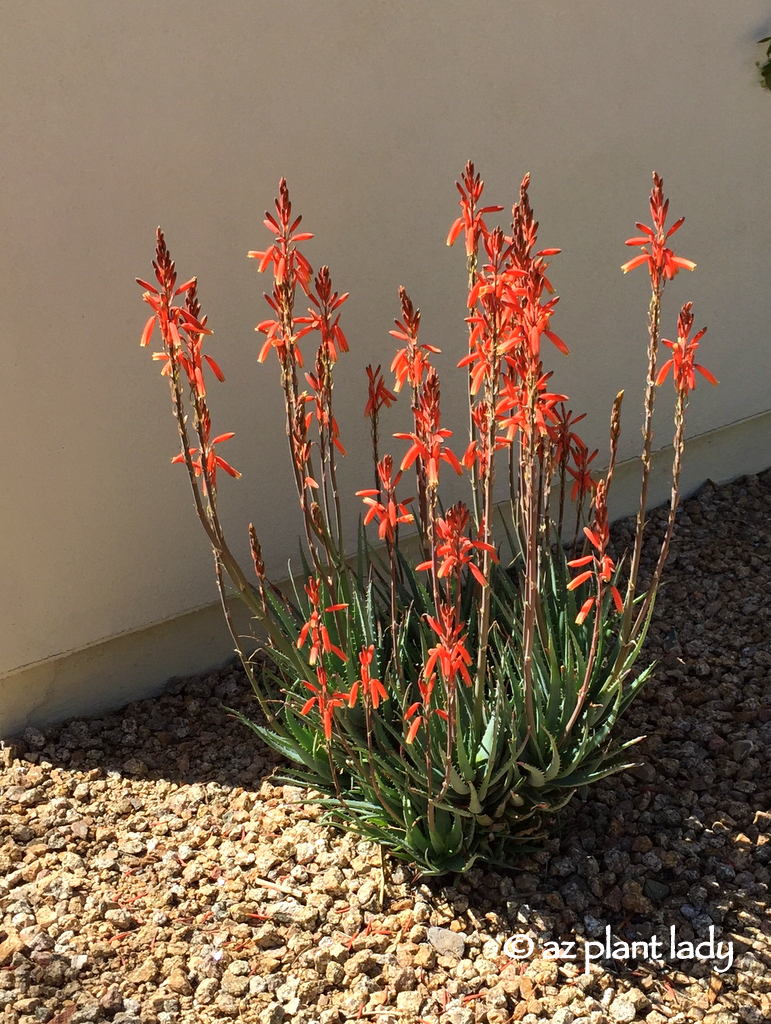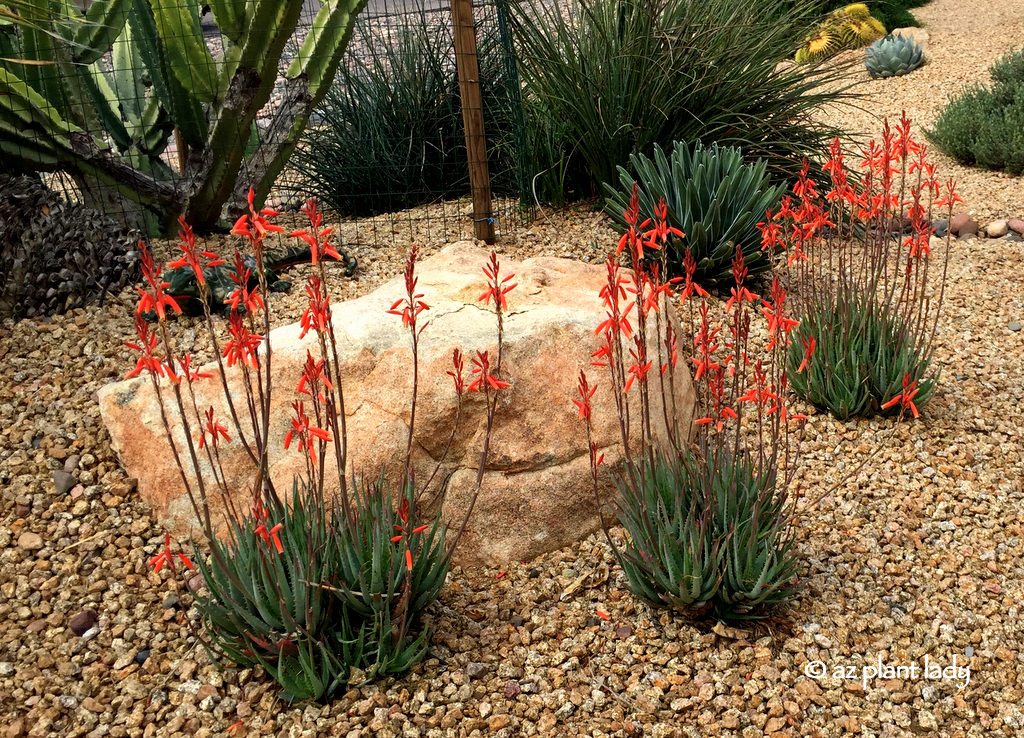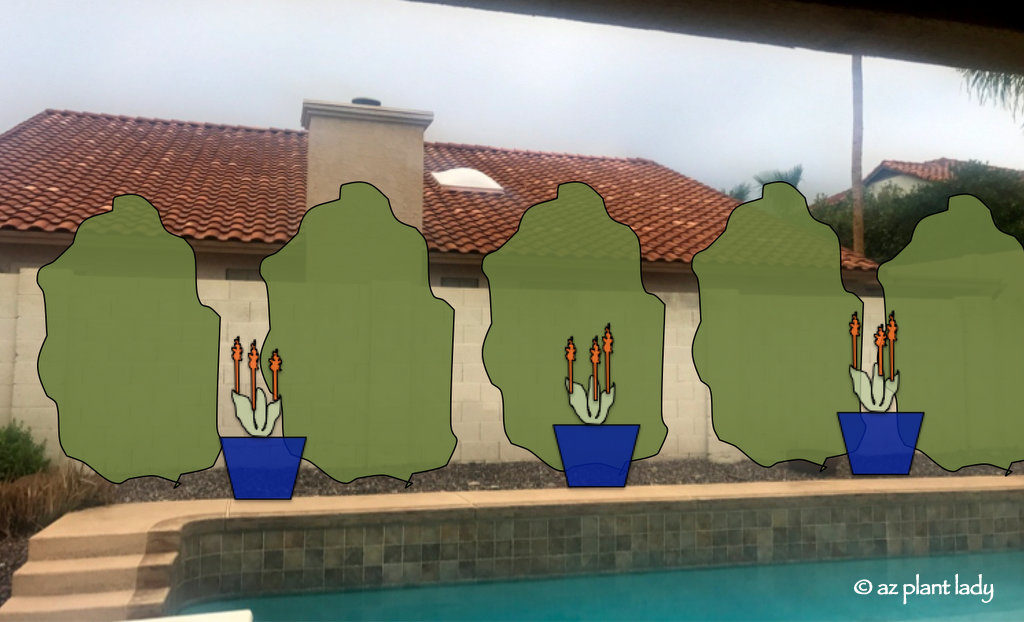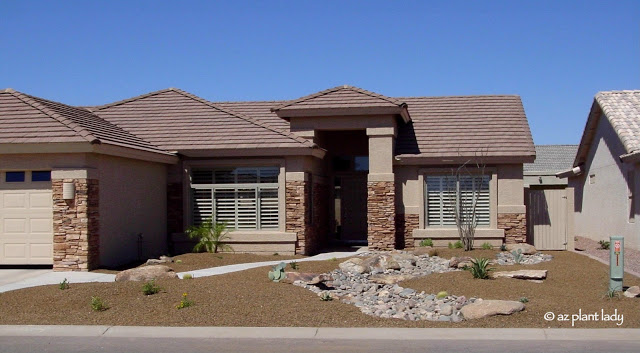
Have you ever driven by a newly-planted landscape? If so, you probably noticed that many of the plants were quite small.
I like to joke that sometimes you need a magnifying glass just to see the new plants. But as small as they are, within a short amount of time, those plants start to grow.
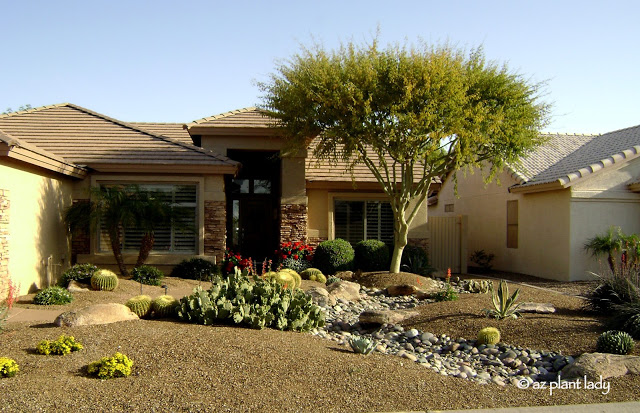
Look at the same landscape three years later. The plants are well-established and look great.
Fast forward eight-ten years, and you may start to see signs of some plants becoming overgrown and unattractive.
When this happens to shrubs, we can often push a ‘restart button’ (for most types of shrubs) and prune them back severely in spring using a good pair of loppers, which reduces their size. I use my Corona loppers to do major pruning of my shrubs.
However, there are some plants where this approach doesn’t work.
Let’s identify a few of these plants and how to deal with them once they outgrow their allotted space or become filled with old, woody growth.
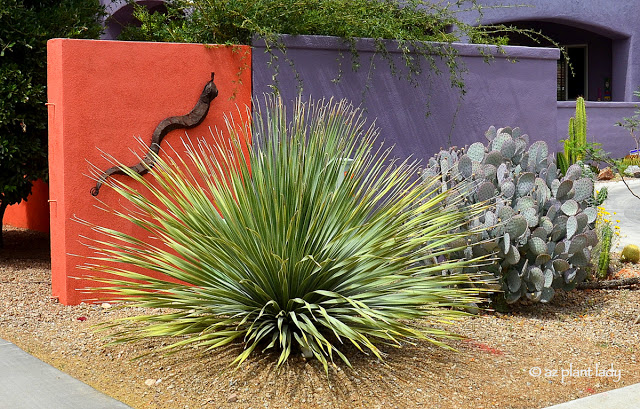
Desert Spoon (Dasylirion wheeleri)
Desert spoon is one of my favorite plants. I love how its blue-gray, spiky leaves add texture to the garden and contrast with plants that have darker green foliage.
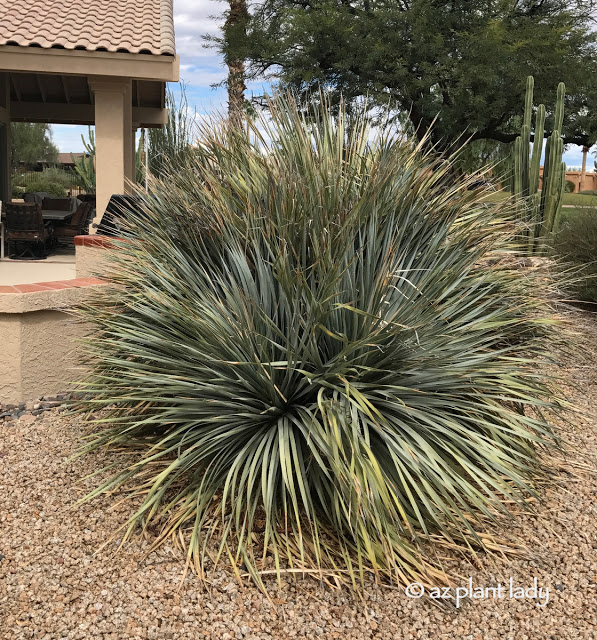
After ten years or more in the landscape, desert spoon can start to take on a ragged, rather unattractive appearance, as well as grow quite large.
When this happens, I recommend that they be removed and a new one planted in its place.
Now, some of you may think that may seem wasteful, but I invite you to take another look at your landscape and the plants within it.
Your outdoor space isn’t static and unchanging. Its appearance changes with the seasons with plants blooming at different times. Trees gradually extend the amount of shade they provide and plants change in size.
A newly planted garden doesn’t look the same through the years, it changes.
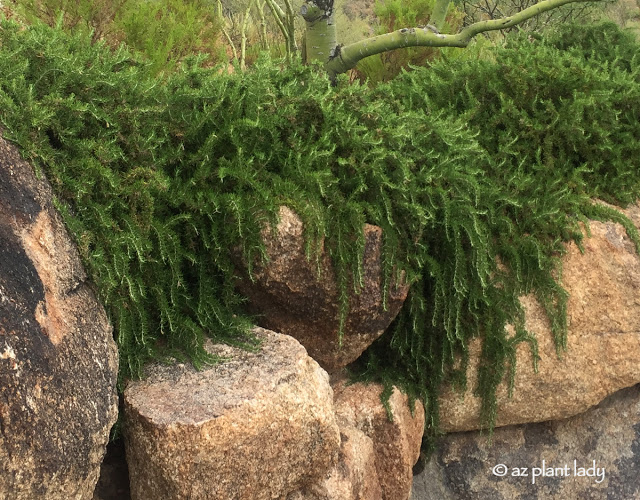
Trailing Rosemary (Rosmarinus officinalis ‘Prostratus’)
Rosemary is a good choice for those who want rich, dark green color in the garden. Bees love the light blue flowers that appear in late winter and spring, and the aromatic foliage can be used to flavor your favorite dishes.
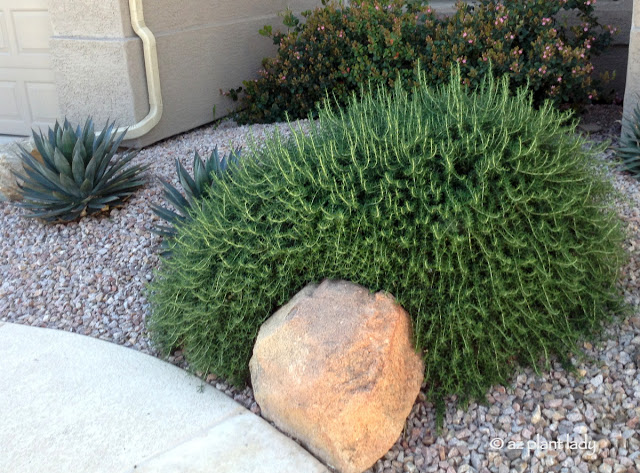
But, as time passes, it does get bigger, outgrowing its original space.
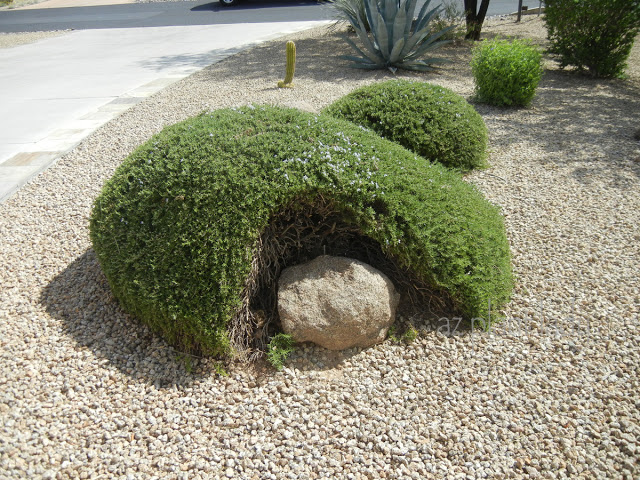
When this happens, people start to shear their rosemary, which is stressful for the plant and contributes to sections of branches dying.
For those who don’t like the formal look, pruning rosemary back severely would be your first impulse. But, the problem with rosemary is that they don’t respond well to severe pruning.
So again, in this case, it’s best to pull out the old rosemary and add a new one, which will provide beauty for several years.
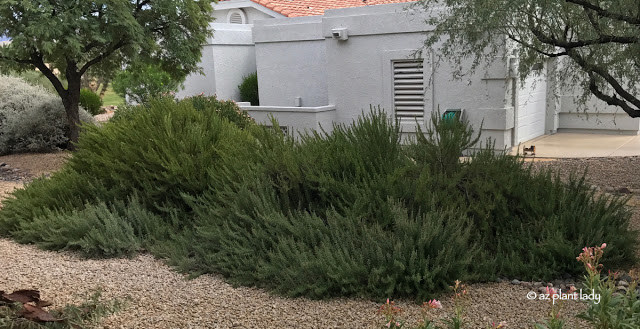
Rosemary hedge
To avoid having to remove and replace rosemary too often, allow them plenty of room to grow to their mature size.
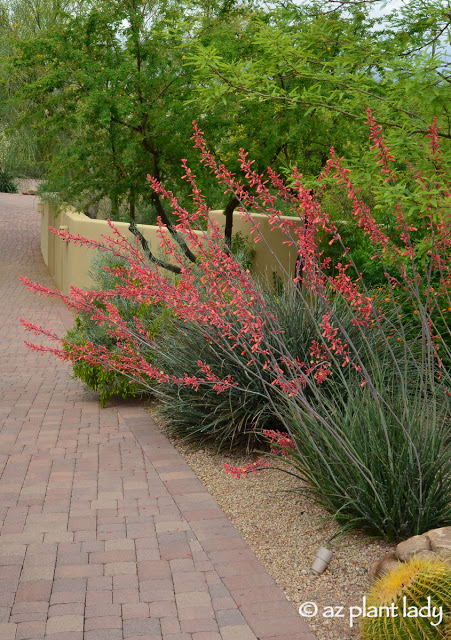
Red Yucca (Hesperaloe parviflora)
Red yucca is prized for its succulent, green leaves that resemble an ornamental grass and its coral flowers, which appear spring through fall.
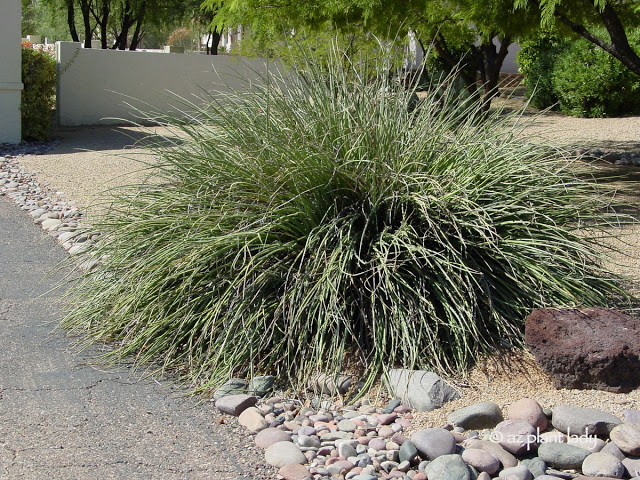
Once it has been growing seven years or more, red yucca may overwhelm the landscape visually. This is particularly true if the area it’s growing in isn’t very big.
Occasionally, some people will try to remove the outer leaves at the base. However, this is laborious and only serves to stimulate red yucca to grow back faster.
In those situations, I tell people that their plant has had a nice life, but it’s time to start over.
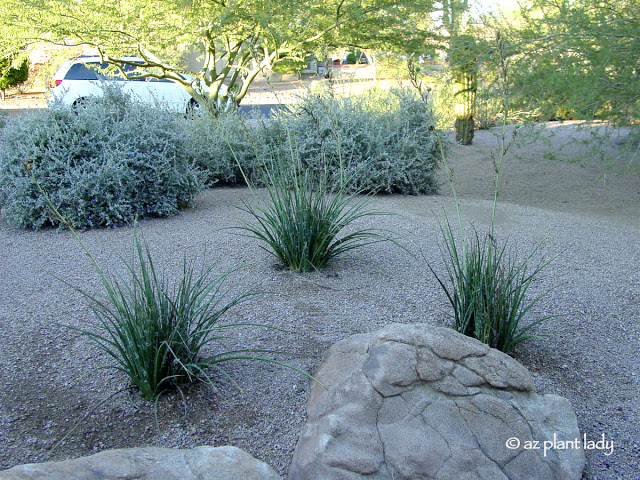
Newly-planted red yucca
You may be thinking, why use plants that you’ll only have to replace after seven to ten years?
Well, all three of these plants add beauty to the landscape and are low-maintenance.
Another way to think of it is to compare your landscape with the interior of your home. Do you make small changes to the decor of your home every few years to keep it looking fresh and attractive? The same should be true of the outside.
Replacing a few plants after seven years or more isn’t expensive. Don’t you think that the beauty these plants offer to your outdoor space makes them worth it?
What have you replaced in your garden recently?
Got Old, Overgrown Plants? Know When to Prune or Replace

